#other highlights from wikipedia include:
Explore tagged Tumblr posts
Text
On Child Abuse and Todoroki Touya
Being a response to this ask:

First, anon, I'd like to thank you for coming at the question of Touya's victimhood in such an honest, open spirit of curiosity. I've seen no shortage of people who, in not understanding why people call Touya a child abuse victim, flip over into belligerence and scorn, which is just no kind of tack to take about such a sensitive topic!
That said, child abuse is a broad, broad, broad topic, and not one I’m exceptionally well-read on, but I’ll try to hit the highlights as to why people—myself included—say Touya was a such a victim. Forgive me if anything I say sounds too basic and therefore condescending; that’s not my intention, I just don’t want to assume your knowledge on anything, as you say you haven’t personally encountered abuse before. If you’re very curious to learn more, there’s no shortage of resources out there, including just starting on Wikipedia’s articles on Child Abuse and Emotional Abuse and going from there.
(Sincerely, and speaking from my own experience, I would recommend everyone do at least some cursory reading on non-physical forms of abuse; it’s much better to know what the red flags are when you first start seeing them than have to enumerate them all only in retrospect. Like, if absolutely nothing else, take five minutes to do an image search for the Power and Control Wheel and look it over.[1])
1: Do note that the P&E wheel was developed in the 1980s, based off of a series of focus group discussions about the shared experiences between women being abused by their male partners. Because of that origin, in the original and still widely replicated version, there’s a segment about “abusing privilege” that doesn’t—because it was never designed to—take into account intersectionality, abuse between same-gendered partners, or women abusing men. More modern versions have attempted to modify the wheel for more general purpose, gender-neutral education about abuse. I find it to be a valuable introductory tool, but it's not a universal authority and shouldn't be treated as such.
Obviously, trigger warnings for discussion of child abuse generally and Touya and the rest of the kids’ situations specifically below the jump.
Introduction
So, the big big thing to keep in mind here is that abuse is not limited to physical violence or sexual abuse. Abuse can take all sorts of forms, even outside of intimate partner relationships: abuse of power, medical or professional abuse, spiritual abuse, financial abuse, and so on. Any list you care to look up of “types of abuse” can be quite long, depending on how granular the list-writers feel like being or who their target audience is. There’s also a great deal of overlap in types and terminology, so some sources will only include a few umbrella terms, whereas others will be much more extensive.
For example, a list identifying forms of abuse aimed at women is going to focus on different things than one about abuse aimed at the elderly, or children, or forms of institutionalized abuse (not to be confused with abuse taking place in institutional settings!). No one much talks about financial abuse when detailing different forms of child abuse, but it would be a major point of discussion for domestic or elder abuse. Comparatively, an exploration of domestic partner abuse may include neglect as a subtype of psychological/emotional abuse, whereas a similar explanation of child abuse will likely include it as a category unto itself.
Looking specifically at child abuse, Wikipedia explains that, depending on your sources, the term “child abuse” may or may not be used synonymously with “child maltreatment.” If they’re considered separate terms, then “child abuse” is considered one subtype, with the other subtype being “child neglect.” If abuse and maltreatment are used interchangeably, then neglect is a subtype of abuse.
More specific definitions and legislation about them vary hugely from place to place based on cultural standards, leeway given based on intentionality,[2] and how provable any given act might be based on clear evidence of harm.
2: As an example, a single parent whose child is suffering malnutrition because they’re living below the poverty line and can’t afford regular, nutritious meals is going to be regarded differently than a financially stable married couple who are actively choosing to spend their money on other things while letting their child go hungry.
Here are some definitions Wikipedia gives, as offered by various relevant organizations and laws:
The World Health Organization (WHO) defines child abuse and child maltreatment as "all forms of physical and/or emotional ill-treatment, sexual abuse, neglect or negligent treatment or commercial or other exploitation, resulting in actual or potential harm to the child's health, survival, development or dignity in the context of a relationship of responsibility, trust or power." In the United States, the Centers for Disease Control and Prevention (CDC) uses the term child maltreatment to refer to both acts of commission (abuse), which include "words or overt actions that cause harm, potential harm, or threat of harm to a child", and acts of omission (neglect), meaning "the failure to provide for a child's basic physical, emotional, or educational needs or to protect a child from harm or potential harm". The United States federal Child Abuse Prevention and Treatment Act defines child abuse and neglect as, at minimum, "any recent act or failure to act on the part of a parent or caretaker which results in death, serious physical or emotional harm, sexual abuse or exploitation" or "an act or failure to act which presents an imminent risk of serious harm".
(From Wikipedia's article on child abuse)
Note how many references there are in that chonky paragraph to neglect and emotional harm. That view of abuse is why pretty much everyone who calls Touya a victim of child abuse is using abuse as the umbrella term that includes neglect, so that’s the tack I’ll be taking here as well. Even if I were considering abuse and neglect separately, though, there are several things Touya is subjected to that should be considered abuse in that more active sense!
There are two big category terms that I’d say are relevant to Touya's experience, both of which are recognized forms of child maltreatment: child neglect and emotional/psychological abuse. You can make an argument for physical abuse as well, though it’s clearly not as extensive as what Shouto or Rei endured. I’ll touch on each of those, as well as point to some of the damage experts predict in victims of those forms of abuse that—intentionally or not on Horikoshi’s part—we do see in Touya/Dabi.
Child Neglect
The physical markers of child neglect are things like inadequate nutrition or shelter, but there are a number of other dimensions as well—some quite severe psychological damage can be done by e.g. a parent who regularly ignores their infant child crying. The same World Health Organization report Wikipedia quoted above noted that emotional neglect can be characterized by “a lack of nurturance, encouragement, and support.” A UK report from the same year included in its definition of neglect, “neglect of, or unresponsiveness to, a child’s basic emotional needs.”
The Wikipedia article itself includes a table listing types of child neglect with various (I assume hypothetical) example cases, among which is “emotional neglect,” described thusly: Guardian or parent give inadequate nurturing or affection. The parent or guardian fails to create an environment where the child feels secure, loved, wanted, worthy, etc.
So how does that all relate to Touya?
Touya seems at first glance to have been getting love and support aplenty in his youth—Enji supported him, was training him, raising him to be a Hero. The family was doing okay at that point. Rei had Fuyumi because she wanted another child,[3] and while Enji, too, still “yearned” for a child with his ideal quirk combination—which he already knew neither Touya nor Fuyumi possessed!—the two of them nonetheless stopped, for a time, with Fuyumi and Touya.
3: Because multiple children could encourage each other, per Endeavor’s characterization of Rei’s stated desires. I note that this is pretty much the same reasoning AFO gave Shimura Kotarou about having another child, just absent the calculated Hero bashing—children should have siblings so they can help each other out. With the way the endgame went, I confess myself shocked that neither Rei nor her parents turned out to be on AFO’s payroll.

The specifics of the timeline are illustrative here. Touya and Fuyumi are only eleven months apart in age, meaning Fuyumi was conceived only two months after Touya’s birth. Comparatively, Fuyumi was closing in on three years old by the time Natsuo was conceived! So, whatever his private desires, at that point in time, Enji was willing to abide, to trust his ambitions to Touya without continuing to try for a child closer to his ideal.
Crucially, at this juncture, Touya wanted exactly the situation he was in! He was thrilled to have this commonality with his father, whom he clearly adored, and unlike Shouto later on, didn’t find Enji’s expectations to be any sort of burden or source of stress. So while you could (and I will) still criticize the dynamic based on Enji’s ulterior motives, Touya’s lived experience was very happy.
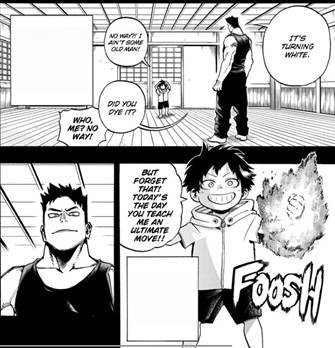
Sidebar: Would that happiness have lasted? I don’t know. Enji’s support of Touya was so plainly conditional; there are so many things that could have disrupted it even if Touya’s health problems had never surfaced and Natsuo and Shouto were never born at all. What if Touya decided he wanted to pursue a different path when he got older? What if his youthful enthusiasm curdled into pridefulness and conceit in ways that made him fare poorly in the Hero Billboard charts? What if he struggled in school and couldn’t get into UA? Assuming that he couldn't surpass All Might within just a few short years of his debut, what would happen when All Might retired after Kamino with neither Endeavor nor [whatever Touya would have chosen for his Hero name] ever surpassing him? Myself, I tend to think that it’s unlikely that Enji and Rei would have stopped at two kids long-term anyway. Even if things had continued going well, Enji’s hope for his idealized quirk combined with Rei’s willingness to have more children in the hopes of having a happy, mutually supportive household would probably have led them to having more children eventually. Perhaps Touya wouldn’t have taken it so badly, if he weren’t already reeling from Enji’s rejection, but Shouto's existence would always have created complications in the dynamic because I don’t think Enji could have resisted starting to focus on what he would have seen as Shouto’s greater potential, and Touya surely would have noticed. In any case, something would always have happened because Enji’s ambitions, not any of his individual children’s responses to those ambitions, were the rot at the heart of the Todoroki family.
That happiness was based on a bad foundation, so it was always likely to crack. Touya’s health issues just revealed what was already there: that Enji saw his children as vessels for his ambition, and when they couldn’t fill that role, he functionally discarded them.

This was emotionally catastrophic for Touya because, again, he adored his father and desperately wanted a relationship with him, but Enji did not provide him with any kind of alternative framework for a relationship outside of “be a Hero that can fulfill my ambition.”
Now, did Enji just casually toss him aside without a second glance? No, of course not. He didn’t even immediately start trying to have kids again! He had enough invested in Touya that he did spend a while getting medical opinions and seeking out advice in hopes of “salvaging” Touya’s prospects; we see as much on the page.

(Honestly, the doc says this is unusual, but given the increasing diversity of quirks, how “unusual” could it possibly be? I would think issues like this would be quite common! What were the odds of Bakugou inheriting his father’s combustive sweat without also getting his father’s immunity to those combustions, for example?)
For Touya, though, the shift was obvious. Enji stopped spending time with him; they didn’t have anything to do together if it wasn’t training. Instead, his father started being harsher, raising his voice when he spoke to Touya, telling him that this was for his own good. All that affection and support, gone overnight.

(Note the jaggedness of Enji’s first talk bubble, and the lingering sharp corners to his second one, and compare them both to the smooth, rounded talk bubbles in the dojo scene or the doctor's analysis above.)
There did seem to be a period in which Enji tried to convince Touya to give up on the Hero goal, but Touya didn't care about being a Hero for its own sake; he cared about it because it was the only source of pride or connection Enji provided. He was asking Touya to give up the one thing Touya knew Enji valued, and that also meant giving up the thing that represented their bond. Touya loved him and didn’t want to give that bond up, so he kept stubbornly trying to push his way through, insisting he could handle it.
We have no evidence that Enji ever managed to get into words that he’d love Touya regardless of whether or not Touya could surpass All Might, but even if he did, Touya clearly didn’t believe him—and why would he, given that it’s obvious that was still Enji’s priority? If Touya was still loved either way, why did his bonding time with his dad dry up overnight? Why was his dad still obsessing over news reports about All Might? And, most importantly, why would his parents start trying to have children again?

Enji’s most important goal at the time was surpassing All Might; he consciously chose to keep pursuing that goal even though doing so made it crystal clear that anything he might have told Touya about how it was okay if Touya couldn’t is just a platitude.
Note how Rei explicitly said in the scene above that Touya knew very well what Enji was hoping for from his children, and them continuing to have more in light of that knowledge would be a horrible cruelty. Again, that’s apparent in the ages of the kids: as long as Touya’s fire was holding up, it was just him and Fuyumi, but practically as soon as his fire started hurting him, suddenly more siblings were being attempted?
That’s all to say, I don’t for a second believe that Enji only proposed having more kids in order to make Touya give up. The page above is Enji making a textually cruel decision which he justified using the well-being of his son but which in actuality revolved around letting him get back to pursuing his ambition, which having a relationship with his son no longer furthered.
Let me copy back in those definitions of emotional neglect:
A lack of nurturance, encouragement, and support; neglect of, or unresponsiveness to, a child’s basic emotional needs; inadequate nurturing or affection. The parent or guardian fails to create an environment where the child feels secure, loved, wanted, worthy, etc.
Enji’s support was conditional. His nurturing revolved 100% around nurturing the growth of a future Hero, and that nurturing itself was pretty flawed, given Endeavor’s ideas about what being a Hero means. When Touya tried to demand support, wanting to get back what he had before, Enji just shut him down. It’s patently obvious that, at the age of three and a half years old, Touya did not feel secure, loved, wanted, or worthy in that home environment. Over the next ten years, it would get progressively worse.
Before I move on to the more active abuse that Enji would come to perpetuate, I want to move away from definitions and briefly talk about some other recognized acts and consequences of child neglect. All per Wikipedia:
• Act: Allowing the child to witness violence or severe abuse between parents or adults.

We don’t see Touya here directly, but this happened immediately after Touya invited Enji to come up to Sekoto Peak, so he presumably did at least see his father storming off bellowing Rei’s name at the top of his lungs. Also, absolutely nothing about this scene suggests to me that it was the first time something like this had happened—Shoto calling it “bullying” suggests it’s a regular occurrence and Fuyumi hiding and covering both her own and Natsuo’s ears also reads as something she learned how to do, not something she was doing for the very first time in this scene. I don’t feel it’s a stretch, then, to chalk it up as part of the form ��child neglect” took for Touya as well.
• Act: Not getting the child adequate medical care.
Too many panels to choose from here! From the evidence of the flashbacks, Touya’s fire started burning him when he was three and a half; he was then intentionally and regularly doing training that resulted him getting burned for ten more years. Even if you argue that he started hiding that training after his attack on Shouto led to Endeavor getting more distant from him than ever, he would still have been doing that training more openly for something like four solid years. In their argument just before that attack, Enji even described him as “covered in burns.”
So, if he was covered in burns, was consistently burning himself for years, was he getting professional medical treatment? (God knows he wasn’t getting psychological help.) Or would that have raised too many uncomfortable questions that could have led to Social Services showing up at the Number 2 Hero’s house in broad daylight right when the neighbors could see it?
That question doesn’t just indict Enji, by the way; it goes for Rei, too. It’s telling that Rei’s response to having a traumatic break and burning Shouto was to embrace him, weeping and apologizing, and try to apply ice to the burn, while the only response we ever see to Touya’s burns, following that early medical consultation, is him getting manhandled and shouted at.
• Consequences: Children from neglectful homes are unlikely to view alternative caregivers as being a source of safety, and instead typically show an increase in aggressive and hyperactive behaviors which may disrupt healthy or secure attachment; they’re often described as glib, manipulative and disingenuous in their interactions with others as they move through childhood.
o Don’t regard other caretakers as being a source of safety:

(I’m aware I’m cheating a little here in that Rei was not an alternative caretaker, she was his literal mother, while AFO and the Evil Orphanage staff were transparently Sus As Hell. Still, I think the shoe fits.)
o Aggressive behavior:

(See also him burning down the Evil Orphanage on his way out. Also see Wikipedia’s list of symptoms for “Psychomotor agitation” and marvel at how many of those behaviors you could connect to Touya and/or Dabi if you wanted to evaluate him on “hyperactive behaviors” as well.)
o Manipulative and disingenuous:

(I don’t necessarily think Touya was consciously being an emotionally manipulative shithead here, but this is emotionally manipulative shithead behavior all the same.)
Moving on now to the other major relevant topic...
Emotional/Psychological Abuse
In the context of discussions of abuse, these two terms are generally used interchangeably. Due to that, and the fuzziness of terminology that I mentioned at the outset, there’s a lot of overlap between definitions/examples of this sort of abuse and child neglect—sometimes neglect is considered a subtype, for example. The Wikipedia articles here are a bit vague and all over the place, so for this section I sought out sites more specifically tailored to the topic of child emotional abuse. (Here, here and here.)
Consistent patterns are immediately visible in what sort of treatment is generally considered to constitute emotional abuse in the context of a parent/child relationship. Several would apply to all the Todoroki children, some exclusively to Shouto, but I’ll go through the ones that seem relevant to Touya.
Rejection/Ignoring: Communicating to a child through words and conduct that he or she is unwanted and/or worthless. Being consistently absent or emotionally unavailable. Continually ignoring or rejecting them. Never expressing positive emotions, showing kindness or congratulating the child on their successes.
A lot of overlap with neglect here that I’ve already covered, but note how, once Touya’s health problems kicked in, we only ever see Touya and Enji interactions come in the form of Touya begging for his father’s attention; Rei likewise said that all Touya wanted was for his father to look at him, which Enji refused to do.
This refusal is most literal in the volume version of Chapter 302, where the added pages really amp up that watching/seeing theme of Enji’s I talked about in my reply to your previous ask. After Touya attacked Shouto, Enji ordered Rei to keep her eyes on Touya; in their later confrontation in the lead-up to Sekoto Peak, Enji brought this up again, demanding to know why she didn’t stop him when watching him was all he asked her to do. When she tearfully said that she couldn’t stop Touya, Enji defensively, furiously shouted that she had to, because he (Enji) wouldn’t “watch.”

(With thanks to @codenamesazanka, here's the Viz digital release version, rather more colloquial than the Japanese, as is often the case with Caleb Cook's localizations for Enji.)
Contextually, I’m sure he was saying he wasn’t going to be the one to look after the kid, but the words also play off his arc theme by showing what Enji not only neglected but explicitly refused to look at/see/watch/pay attention to.
Verbal Abuse: Threatening, cursing, or yelling at children. Consistently humiliating or criticizing them, especially in front of others. Blaming or scapegoating them for the parent’s own abuse.
At the same time that Touya was now having to beg for any attention, the only attention he did get became negative. I don’t think Enji literally cursed at him in any of the scenes we see, but his language became noticeably rougher and sharper in ways that the Viz official release localizes as including cursing, even though he wasn’t e.g. directly calling Touya swears. (That is, the English translation has Enji saying, “Dammit!” in amidst his rants, but no directly addressed profanity like “bastard” or “asshole.”)
I leave an extended discussion of that localization choice to those with a greater understanding of the Japanese context, but Enji did unequivocally yell, both at Touya and at everyone else, in front of other family members and at volumes other family members couldn’t help but overhear.

He also consistently treated Touya as if Touya’s pleas for attention or secret training were the problem when the problem was very obviously Enji’s own neglect. “Why won’t you stop?” “Why don’t you get it?” It’s not as direct as, say, beating Touya and then saying the beating was his own fault, but he blamed Touya for hurting himself, blamed Rei for not intervening, when Touya’s injuries were a direct result of Enji refusing to acknowledge that his responsibility for his child’s emotional well-being should take precedence over his desperately shallow desire to stand on top of an awards podium.
As to threats, intimidation in all forms is another one of those things that crops up all over abuse lists. While Enji didn’t overtly threaten Touya, lord knows his body language was scary as hell—all that looming and glaring and grimacing! We know he would destroy things when he got angry enough—as seen in his trashed dojo after All Might announced his retirement—and destruction of property[4] is a frequent example of psychological abuse via intimidation.
4: As of e.g. throwing household items during fights, slamming doors or on walls, or especially breaking the victim’s personal belongings.
We do also see one instance of him manhandling Touya in a way that would quite clearly qualify as outright physically abusive in a domestic partner relationship.

In the context of urgently checking one’s child for injuries, this is slightly more forgivable, but the urgency here wasn’t really about Touya’s health; it was about how he was continuing to disobey Enji’s wishes, and the indication that Rei wasn’t doing what Enji wanted her to, either. Note Touya’s wide-eyed, rigid expression at the rough handling.
I don’t think there’s enough of an established pattern to conclusively ding Enji as physically abusive towards Touya, but on the other hand, the general consensus of experts (as I understand it) is that labeling a relationship emotionally abusive requires a consistent, persistent pattern of abusive behavior (because it’s easy to handwave off individual uses of ugly language as just the unintended result of speaking in anger or a making a joke that didn’t land), whereas a physically abusive relationship can be judged as such based on a single violent incident (because it’s harder to make convincing excuses for hitting someone).
In that sense, and based on how he treated Rei and Shouto, I would not be hard-pressed to believe that Enji was all too ready to use physical force dragging Touya around against his will (out of the dojo, back to his room, to Rei so she could administer first aid for his burns, etc.). That would, again, easily qualify as abuse in the sense of domestic partner violence; while I can see the argument that it’s different with kids, even the one instance of it we see already raises my eyebrows, and my likelihood of calling it child abuse would increase the more frequently it was happening.
Manipulation/Exploitation: Manipulating a child, forcing a responsibility on them without regard to their development, not recognizing their individuality, having unreasonable expectations/unreasonable demands, comparing them to others/their siblings.
This is all most applicable to Shouto, obviously, but it’s also where you can clearly see Enji’s treatment of Touya as abusive even when he and Touya were both very happy. Remember, Touya wasn’t even four yet when his ice nature started asserting itself, so all that stuff about surpassing All Might was a responsibility/expectation Enji was pushing on a three-year old—a literal toddler!—absolutely without regard to anything Touya might have wanted or chosen if left to his own devices. He didn’t keep pushing once it became clear Touya wouldn’t be able to meet those expectations, of course, but he also didn’t demonstrate for Touya any other ways to be close to him/earn his approval.
Also, while I still think him wanting to push ahead with having more children is more about fulfilling his own ambitions than genuinely helping Touya, he did still frame the decision as being about Touya. Specifically, he wanted to do it to “make” Touya give up; it was a manipulative tactic chosen specifically in hopes of breaking Touya’s stubbornness because Enji couldn’t find a more appropriate method of convincing Touya to give up on pursuing Heroism.
Closing out this section, here are some Dabi-relevant consequences I found noted for emotional/psychological abuse, per Wikipedia:
• Poor self-esteem:

(I know this is from a scene where he was proclaiming his own capability, but what strikes me as indicative is the way he unironically referred to himself as Endeavor’s “creation.” Not the wording of someone with a good strong sense of independent self! Refer back also to his calling himself and Natsuo “failed creations.”)
• Destructive behavior, angry acts such as fire setting: (Waves at all of Dabi)
• Withdrawal, difficulty forming relationships, isolated from their parents, have few (if any) friends:

(If you don’t think this qualifies, see also Dabi’s stand-offish relationship with the League. I think he did have a measure of care for them, but it was pretty stunted, as well as filtered through several layers of variably plausible belief that they only mattered to him insomuch as they were relevant to his goals.)
• Difficulty controlling strong emotions:

(See also Dabi’s swings into grinning, off-balance mania.)
• Suicide.

(To my eyes, this desire to commit a murder-suicide with his father goes back at least at far as the first war—because I’m not confident in Dabi’s ability or desire to survive that blue-flame Prominence Burn Best Jeanist interrupted—and maybe even all the way back to Dabi’s “birth” praying at his own memorial photo at the family shrine, what with Dabi’s very name meaning “cremation” and all.)
Child Abuse in Japanese Resources
One of the things I made sure to do over the course of writing this piece was look up resources actually from Japan on the topic of child abuse, just to be sure that their conception of what constitutes abuse didn’t diverge in some unexpected way from my English-language resources. They did not—everything I covered above can also be found on Japanese web resources on child abuse—but they did, interestingly, include some things not covered by my English resources, things I take to be more specific to Japanese law and/or culture. I want to touch on those briefly before I wrap this up.
(The specific phrasing I use below is taken from the English-language version of the website Lights On Children, a Tokyo-based NPO focused on raising awareness and resources for children living in alternative care situations like children’s homes or foster families, but similar points were found on other websites as well.)
Inflicting burns as a form of physical abuse.
I didn’t discuss it specifically above because most of what I was working from was specific lists/infographics about signs of non-physical abuse, but I noticed on this site—and it’s true for English sites as well!—that burns on a child are a well-recognized sign of child abuse, ubiquitous on any list of tells for physical abuse. I wouldn’t suspect Horikoshi had that in mind specifically when brainstorming Shouto and the rest of his family situation, but it is notable that Shouto's most obvious injury, the one that gets his mother institutionalized, is a facial burn.
Touya hid his injuries, nominally so Enji didn’t realize he was still training and shout at him all the time or take more drastic measures to make him stop, but I gotta say, a school nurse doing a routine health check-up would not know the difference between burns Touya got from self-taught training and burns Touya got from his famous flame-wielding Hero father. The fact that they were hidden, and especially that they were on his torso rather than his limbs, should be screamingly suspicious to any semi-trained professional, and I truly wonder what the in-universe explanation is for how Touya got through 7+ years of regular school health screenings without Endeavor getting into serious trouble.
Not taking the child to a medical institution/hospital if they are in serious need of care.
This is another one that was ubiquitous under acts that constitute neglect. Japan has universal health care, you see, so there’s even less excuse for not getting your kids medical help if they need it than there would be in the U.S.[5] This goes back to my questions about whether Touya was ever taken to see a doctor/the emergency room to address his burns. Small ones I could see Enji and Rei plausibly justifying taking care of at the house, which, given the nature of Enji’s job and training regimen, was presumably well-stocked to handle such first aid. That huge band across Touya’s entire abdomen in Chapter 302, not so much.
5: My research suggests that all children under a certain age are eligible for Medicaid in the U.S. regardless of whether or not their parents qualify, so denying your child needed care is still heckin’ illegal here, too! However, health insurance in the U.S. is such a horrible morass that it wouldn’t surprise me if plenty of parents don’t know—or at least could plausibly claim that they don’t—about hospital requirements to provide care for kids regardless of their parents’ ability to pay.
Discriminatory treatment among siblings.
This one barely came up at all in English-language resources but was super common on the Japanese sites, I assume because the country’s deeply engrained problems with patriarchal attitudes is more likely to result in that kind of disparity between the treatment given to sons and daughters, or the oldest son compared to basically everyone else. I’ve also seen enough examples in anime of wildly differing treatment of adopted children—or step-children!—versus blood-related children that I assume it’s a reflection of some real-life precedent!
The relevance for the Todoroki children is, I trust, obvious.
Abusive actions to siblings.
I discussed above how allowing children to witness domestic partner violence is itself an act of child abuse, even if the abuser never lays a finger on the child themselves, and the same goes here. If anything, it’s even more stringent: the stuff about partner violence tends to specify letting a child witness it, while that qualifier of a child's perception is not present for sibling abuse. Abusing one child in any way—physically, sexually, psychologically, or via neglect—constitutes psychological abuse for all children in the home.
For the Todorokis, then, what Enji (or Rei!) did to any individual one of the children—be it the isolation and abusive training Shouto underwent, the rejection and verbal abuse Touya endured, or even the disregard and parentification Fuyumi and Natsuo had to deal with[6]—qualifies as abuse of all of them.
6: More prominent for Fuyumi, but Natsuo talked about the meals he cooked as well. I don’t think we know what-all the housekeeper did, how much she was around, or how old the kids were when she retired (at least old enough that Enji didn’t bother replacing her) but Fuyumi’d been trying to protect Natsuo from their family’s damage since she was seven years old.
Wrap-Up
So, I hope this has all clarified for you, anon, why people so readily call Touya an abuse victim. He was—they all were! I should also note, before I let readers go, that there’s not really a question of severity here, either: numerous studies have shown that the impact of psychological abuse and/or child neglect is no less damaging—and may even be more damaging—than the harm done by physical or sexual abuse in isolation. So it’s not like Touya’s just wildly overreacting or some kind of Bad Egg—while obviously not all abuse victims grow up into violent criminals, a certain percentage of them do, and Touya falls into that category.
It’s one of the things I always liked about the Todoroki plot, really. Four children, all of whom had wildly different responses to the abuse they suffered, allows room for one of them to be completely (and entertainingly!) unhinged about it without consequently implying that abuse will inevitably turn victims into violent monsters.
Thanks for the ask!
#bnha#todoroki touya#todoroki enji#bnha dabi#bnha endeavor#todoroki rei#todoroki family#tw: child abuse#tw: child neglect#moderately image heavy#my writing#todotalk#stillness answers
67 notes
·
View notes
Text
—From the Introduction to "On the Courtship of Hedgehogs," by J. & B., PhD, Mobotropolis Press
I grew up a SatAM and Archie Sonic fan, so there’s a lot of small references in this fic to the older media. J. and B. are actually Jules and Bernadette, better known as Sonic’s parents! I liked the idea that, even though movie Sonic’s parents are absent (dead?), they are still teaching him about growing up and love.
*****
But Amy also just had her own innate charm. She was upbeat, kind, frighteningly strong, a fellow animal-lover, and, above all other things, obsessed with all things romance.
I wound up convinced that Amy Rose loves (non-sentient) animals PURELY because of her first Lego set, “Amy’s Animal Rescue Island.” But I think it works. Her liking animals also solved the problem of where she lives. It’s addressed later, but she lives with Zimmer, who’s the farmer we see in movie 1. Zimmer now also has goats. Of the Tauernscheck breed, also known as...Austrian goats. There is NO WAY that Austrian goat milk is milk Stone FLEW IN from Austria, it would ruin the FRESHNESS of the product!
*****
the girl had needled about the Wachowski’s relationship with the fervor of one of those...oh, what was the word? Ah, right. Shippers.
THE CALL IS COMING FROM INSIDE THE BUILDING.
*****
Five years had passed since Amy arrived on Earth to stop the Skynet-ripoff menace of Metal Sonic. Only a year after, one Rouge the Bat had surfaced...
I’ve got a couple ideas on a Metal Sonic fic to slot in as a prequel, but I’m trying to be good and stick to this one project until it’s done. As for Rouge, I was replaying SA2 for my kid, and realized she was semil-known as a spy before the events of the game. I think, in this story’s universe, she likewise got established at GUN before the hero trio met her.
*****
...the two misfits off in Station Square.
Where is Station Square in this fic? Just close enough for Amy to visit at her running speed (which I’m assuming is fast, but nowhere near Sonic’s speed). I actually find this really funny, as it implies that Station Square is in Montana, which is...not a big-city kind of state.
*****
Maddie had almost been relieved to find nothing about construction in Rosemary P.’s "The Courtship of Foxes"...
Rosemary P. would actually be...Rosemary Prower, Archie comics Tails’s mom!
*****
mini MGA reader
The Mobotropolis Grand Archive. This is the Archie Sonic-verse version of Wikipedia. The MGA is part of the research backbone of Sally Acorn’s digital assistant, Nicole. In this fic, it’s an information repository, including a lot of fiction.
*****
He still thinks Watergate salad is haute cuisine.
I love the idea of Shadow eating terrible 1970s food. Other highlights would include Hamburger Helper and the McDonalds Egg McMuffin, as well as a general craze for cheese logs and Jell-o.
*****
...things are probably backed up all the way to the Mean Bean."
I decided to be a little hand-wavy and let Stone go back to work at the coffee shop. There IS a reason, within the Metal Sonic story, and it does get alluded to a few times in the fic. But I just like Stone.
*****
...but half of the new hires just had to do an "emergency pitstop" in Montana's most famous open-air exotic zoo.
There’s no way Sonic and crew were kept a secret after the entire Eclipse Cannon thing.
*****
“Californians.”
Shots fired, at myself.
*****
And there was just one creature on this planet, or any other, who could exhaust him.
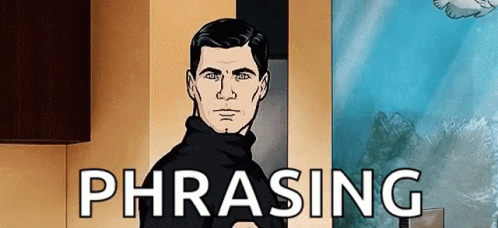
*****
"Heeeey, Shadoooow"
It’s me. The Devil. (STOP.)
*****
This clearing had become their accustomed meeting place. The center had once been dominated by a giant cedar, but now, thanks to his metal counterpart, all that remained was a wide, laser-cut stump and a few blasted pieces of the trunk, just starting to decay.
Tip: don’t get bogged up on details. I spent, like, at least 20 minutes figuring out what kind of tree in Montana would leave a big enough stump, with the end result that I can actually point out the specific area these two are meeting.
*****
Scandal at the Food Court!
Panic! At the Disco.
*****
A little trill came from somewhere deep in Sonic’s chest and he rubbed his chin against the crumbling bark. The scratch sent jolts down his back, somehow to the tips of his quills, and the trill tuned up a notch.
Hedgehogs do not have scent glands. A fact which PISSED ME OFF when I learned it, because I love the idea of Sonic scent marking. I kept a few scent spreading/sharing things in the fic, but never specifically call it “marking.”
Not to say hedgehogs don’t HAVE a scent, just that it’s not a glands thing.
*****
....a chocolate muffin big enough to qualify for its own zip code.
Shortly after beginning this fic, Costco changed their muffins, and now they’re a lot smaller. I have never felt more betrayed.
*****
Sonic chattered the whole time, darting back and forth, coming to sharp stops, posing and preening as he cut off and corralled his opponent, coming in closer with every revolution.
Seeing fanart of these two circling is what inspired this fic. Sigh, oh how fanfic can warp your mind, that I can see running in circles as romantic.
*****
Amy rooted about in her messenger bag, pulling out a phone. “Rouge, when I get my hands on you!"
I was very happy when I decided Rouge and Amy would be friends. It turned out to be very useful in the future of this fic, as there were a few times I needed ways to pass info between characters while not involving other characters. Amy and Rouge were perfect for that, and they wind up having some fun interactions. I should do little fic for them. Maybe a girl’s night out heist. Maddie can come, too.
43 notes
·
View notes
Text
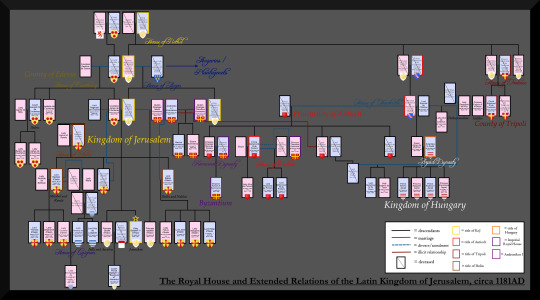
The final result of the genealogy project I mentioned previously.
*faints*
For personal research purposes, I've compiled the immediate relations of the royal family of the Latin Kingdom of Jerusalem at about the year 1181AD. I'm posting it here in case anyone else finds it useful for their own research.
Do take note of a few things, however:
I wasn't able to put absolutely everyone on it - the tree is difficult enough to read as it is, so I only included those I considered relevant to the local politics; for example, the vast majority of the Komnenos Dynasty is left out, but those listed are all related in some form or fashion.
Likewise, most relations extending to Western Europe are also excluded (IE: Aimery and Guy's other siblings).
I've provided a key to help read it as well as color-coded annotations where appropriate regarding state relations/major houses. Do note that the persons labeled as "deceased" are deceased by 1181. Several dates are unknown, however - no death date was provided for Countess Beatrice de Saone, so I didn't mark her as deceased, even though it is probable that she is by that date.
Be sure to follow the marriage lines closely. There are several cases of second and even third marriages. The marriage ties are especially intriguing in regards to the controversial Ibelins...
Andronikos I is highlighted differently because... he's Andronikos. Seriously, read up on him sometime if you haven't yet. He's... something.
Finally, I've also included the dynastic coats of arms when available (mostly from wikipedia). Some of these arms are different between the European and Levantine family branches, as well as different from attributed arms given in later centuries. An example of this is the arms of de Lusignan, which appeared as shown on the chart until Richard the Lionheart granted a red rampant lion charge on top of it later on. The arms of the Jerusalem cadet branch of the House of Anjou (d'Anjou-Jerusalem) are debated at this point, so I've just given the ruling family the later-known arms of the kingdom. Makes it easier to follow the path of the crown.
Obviously, you'll need to view it in a new tab/window to get all the details. Some of the words/names also bleed over into other lines here and there, but that's just the way the tree generator smashed them together.
#kingdom of heaven#kingdom of heaven 2005#kingdom of heaven fandom#baldwin iv#king baldwin iv#kingdom of jerusalem#latin kingdom of jerusalem#koh fandom#crusades history#crusades#historical#medieval#12th century
77 notes
·
View notes
Text
If I didn't mention it, I'll be voting for Jasmine Sherman (they/them) in November, Because they already have Ballot Access in 48 states , as opposed to Jill Stein who currently only has ~23 states with Ballot Access.
EDIT:
Someone has commented to point out that while Jasmine Sherman's website lists out 48 states that they're on the Ballot for, there's no sources given for this information, and right now, while its only wikipedia articles, neither of us can find any ballot access map or list not on their website that confirms that information independantly.
https://en.wikipedia.org/wiki/Ballot_access_in_the_2024_United_States_presidential_election

https://en.wikipedia.org/wiki/2024_Green_Party_presidential_primaries#Declared_candidates
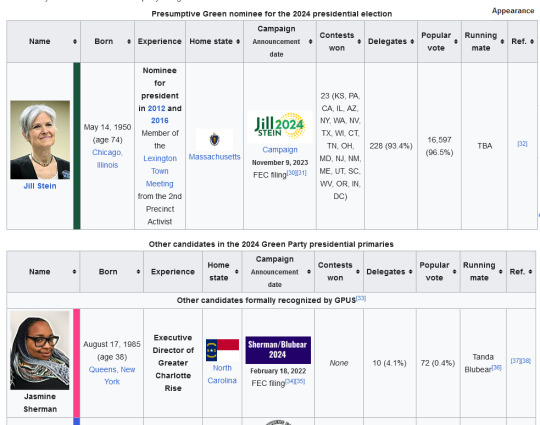
Jasmine Sherman's own "how to vote for us" section of their website encourages people to use Ballotpedia, they're only listed as being on the ballot for one state , while the Presidential Election 2024 page does not list them at all and neither does their ballot-access tracker at politico:
Jasmine Sherman's website also lists them as being on the ballot under the Unicorn Party.... but I have not seen any list anywhere that list where the Unicorn Party is on the ballot except for their website.
There's also the fact that their website's policy on the Death Penalty not only supports it, but wants it to be either by Morphine Overdose or fucking Firing Squad with only 1 year of appeals??? There's a footnote above it that says their position has changed and they're leaving the original policy up for preservation but like...
.. you can't run for President saying you want the Death Penalty to be done by Firing Squad of all fucking things when people almost universally hate the death penalty (not least of which because it kills so many innocents) and then just leave a note that you changed your mind but not what your new official stance is????
https://jasminesherman.com/death-penalty-policy/ [note at top of Policy page] *Jasmine wishes to inform the readers that this post is being preserved to uphold transparency. While the death penalty contradicts the Green Party’s platform, it would be disingenuous to ignore the evolution of Jasmine’s stance on this matter. Their transition from previous support to a different standpoint is noteworthy, highlighting that a candidate’s position is not solely driven by personal preferences but also reflects the desires of their constituents. [Policy] Purpose: Institute a federal standard for capital punishment. Scope: Encourage states to be more efficient with resources surrounding the enforcement of “Capital Punishment.” Our policy: Capital Punishment – is to be reserved for those convicted of mass killing and serial killer events only. Due process is to take no more than one calendar year. There should be two options available for the execution; morphine overdose or firing squad. All other capital punishment cases will remain as they are or will be subject to incorporation into the Unicorn Party’s “Restorative Justice Treatment Program”. Definitions: Mass Killing Event: A multiple homicide incident in which four or more victims are murdered by any means, within one event, and in one or more locations in close proximity. Serial Killing: The unlawful killing of two or more victims by the same offender(s), in separate events.
So, uhhhhh, yeah. If you want to kill people who are Officially Criminals by Firing Squad I don't really think you can be trusted to be thinking in terms of humane death or punishment. Note how the website does not include what their official new position is at all, when that's literally what the Policy page is for!
If you believe in Restorative Justice and universal healthcare because everyone deserves the right to life .... if you truely believe in that how can you support the Death Penalty at all, let alone by such barbaric methods?
There's also the "Policy" about "Rights of Sentient Beings" that says
"The majority of research does suggest that primarily plant based consumption for humans is ideal. This doesn’t include those with disabilities or health phenomenons we do not understand.
which.... from almost everything I've read out there published by actual medical professionals, unless you're going out of your way to eat very specific things each and every day, you're going to run into nutritional deficiencies and need to take supplements if you're going vegetarian or vegan! In fact, you have to as much as double your iron intake on a plant-based diet because the iron we get from plants isn't as digestible as the one we get from meat. Because. You know. we're literally omnivores for a reason.
SO! After doing some more deep dives into their actual policies (such as they are), and looking deeper into the supposed-ballot access, Jasmine Sherman is not a candidate I will be voting for.
You can advocate for the humane treatment of animals without insisting that all humans except disabled people are perfectly capable of healthily living on a vegan diet, because that's simply not true without supplaments or a vastly increased access to a variety of foods, and if you truly believe in abolishing the criminal-justice system, there's no way in fucking hell you would support the Death Penalty.
Like I said in my longer version of this post (which is still relevant, check out the reblogs), voting third partym eans being adaptable and doing research in pursuit of a Free Palestine , which means, until we can get some independant verification of Jasmine Sherman having ballot access in 48 states, (and an actual proven change on that horrific stance on Capital Punishment!!!!), it is back to Jill Stein for me.
Unlike Jasmine Sherman, Jill Stein actually wants to abolish the Death Pentalty entirely, and has a long list of changes she plans to implement for restorative justice if elected:
93 notes
·
View notes
Text
DRDT SPOILERS.
Theories and headcanons about the execution of the murderer of the second chapter.
And so... Since we know the murderer of this chapter (They is innocent, believe me), I want to share my guesses about their possible execution.
.
.
.
.
.
.
My reasoning will begin with the fact that there are executions in danganronpa that not only reflect the killer's talent, but also contain things that they don't like ( Example: Mikan Tsumiki )


In her execution, you can see the oversize objects ( You can notice a large syringe, and then a huge hand and space appear ), which she doesn't like and is afraid of. All in order to make her fall into despair.
Following from Ace's Wikipedia, you can find out that he doesn't like horses and meat. ( But this is only from material things. I'll mention the rest later )

Of course, if he is a jockey, then the execution itself is more likely to involve horses, however, I would find his execution more interesting if it involves meat ( or some other food ). Based on these words, it can be concluded that there are two possible scenarios for his execution: a horse and food.
Food:
If we go on this trail, then since Ace has an eating disorder, then he can be under tremendous pressure from himself. He will either be forced to eat something, or he will soon become someone's food ( the same meat that he neglects )
Horses:
You can die in different ways because of horses, so I've given you a list of some historical figures who died because of a horse-related accident. Here are the highlights:
« He fell from his horse onto his sword and fell to his death »
« He was thrown from his horse into cold water and suffered a fatal heart attack or drowned as a result »
« He fell in front of a horse that stepped on his head »
« He fractured his skull when his horse stumbled and fell »
In general, I understand Ace why he is so afraid of horses. I think there are at least two possible scenarios ( they are divided into subtypes )
The first scenario :
I think a horse racing option is possible.
Subtype 1:
Horse racing contains a dangerous obstacle course. Ace goes through them all at first, but at the very last moment he messes up ( It is possible that Monotv cheated by giving impossible obstacles to overcome or outwitted him )
Subtype 2:
Ace successfully overcomes the same dangerous obstacle course, but his supposed opponent cheated and won. Ace's loss may anger those who bet money on him. That's why, let's say, they started throwing stones at him.
The second scenario :
Historical events. Executions of the Middle Ages. (both that I found are very similar )
Subtype 1:
To be hanged, drawn and quartered was a method of torturous capital punishment used principally to execute men convicted of high treason in medieval and early modern Britain and Ireland. The convicted traitor was fastened to a hurdle, or wooden panel, and drawn behind a horse to the place of execution, where he was then hanged (almost to the point of death), emasculated, disembowelled, beheaded, and quartered.
Subtype 2:
The remainder of the punishment might include hanging ( usually not to the death ), usually live disemboweling, burning of the entrails, beheading, and quartering. This last step was sometimes accomplished by tying each of the four limbs to a different horse and spurring them in different directions.

If it concerns 2 subtypes of the second scenario ( 1, in principle, too ), then it will be funny to put pressure on the moment with his already fragile neck.
And I'm going back a little to the moment when I was talking about Ace's dislikes! Of the non-material ones, he dislikes the following: being a jockey and being perceived as incompetent.
We know perfectly well that Ace is a rather short — tempered personality, most often acting impulsively due to aroused emotions. It can be assumed that his own execution will carry ridicule about his lack of professionalism and frivolous attitude to the sport in which he is so famous. It is possible that his entire execution will stupidly mock his desire to escape both from the killing game and from his daily life ( It was also the case with Teruteru, who was turned into his unloved food, and also presented on the cover of the execution in the form of a pig in honor of disrespect )
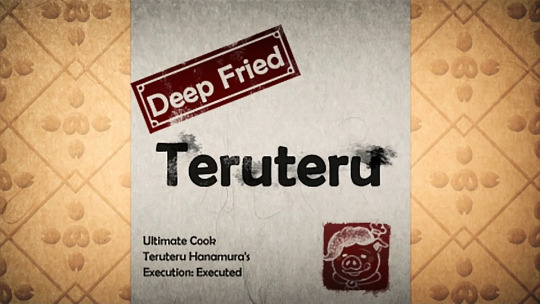
It is likely that in this scenario, he will be banally pissed off, which will make him act irrationally. And these actions of his based on negative emotions will push him to a fatal mistake.
That's all!
Thank you for your attention and time, because Ace is actually alive and not dead and it was all a prank hehehahHaehEhhaHahehe....
50 notes
·
View notes
Text
Theios Aner, or Ancient Magic in Antiquity
Sometimes I get really curious about the sources the writers for HL used to get inspiration for Hogwarts Legacy and Ancient Magic.
For instance, I was doing some research into magical practice in ancient civilisations to see if we can find traces of some of the very first known wizards for the HP universe and I stumbled upon about a group of people in ancient Greece called ‘theios aner’ (θεῖος ἀνήρ) which is translated to ‘divine men’. The definition for these theios aner given by Wikipedia is:
Person connected to the gods, which grants them the ability to perform miracles and supernatural events.
And, think about it!, if we just replace "the gods" in that sentence with "ancient magic" we get a description that fits our MC and the abilities they get from their strange connection to AM. So I started to wonder: are the theios aner some of the very first known ancient magic wielders?
One of the earliest exemple of one of these ‘divine men’ is Pythagoras of Samos, born 570 BCE. Many miracles have been attributed to him, including:
Being seen in two different cities (Metapontum in Italy and Tauromenium in Sicily) on the same day, conversing with friends
Having tamed a savage bear by the power of his voice alone and converting it to vegetarianism
Stopping an ox from eating beans
A white eagle coming down onto his shoulder so Pythagoras could pet it
Biting a venomous snake to death
The river Caicasus calling to him "Hail, Pythagoras!" as he was passing over it with some friends
Having a thigh made of gold
Predicting that a dead man would be found on a ship entering the harbour
(Some sources for this: 1, 2)
What struck when reading this list of ‘miracles’ is that, if we try to explain each of these by a magical discipline we know from the Wizarding World we get:
Time-travel (being present in two cities at the same time)
Care of Magical Creatures or, generally, an ability to communicate with animals (taming the bear, the ox and the eagle)
Divination (predicting the dead man)
Transfiguration (thigh made of gold and probably also biting a venomous snake to death by using self-transfiguration to change his mouth to something able to kill the snake and be immune to the venom)
(The only one difficult to explain is the one about the river calling ‘Hi!’ to him 😂. Although if we stretch it, it could also be some advanced transfiguration that changes the river into something capable of speech.)
And if we consider these 4 disciplines, we realise that they correspond exactly to the specialised skills of the four Keepers: Niamh Fitzgerald being a time-traveler (I explained here why I think that!), San Bakar teaching Care of Magical Creatures and his trial being about taming a magical creature, Percival Rackham being a seer and Charles Rookwood teaching transfiguration.
Cue the famous meme!
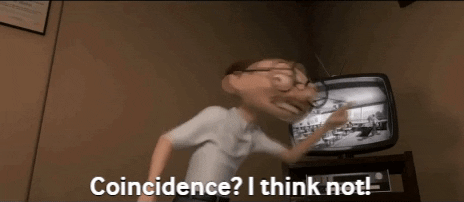
I’ve always found Bakar’s ability and his trial to be very random after the sophisticated dungeons we had to go through for the other Keepers, but if we consider that the writers of HL took inspiration from the the ancient theois aner as the originals wielders of Ancient Magic and that the 4 disciplines highlighted are at the core of the abilities granted to a wizard by Ancient Magic, then suddenly his trial makes sense!
[And, if you would allow me a completely crazy tangent here!, I just realized that the only 3 ‘special abilities’ we know of in the Wizarding world, i.e. Metamorphmagi, true Seers and Parselmouths, just happen to correspond to 3 of the 4 Ancient Magic disciplines! And for the metamorphmagi and parselmouths, it’s not just any type of transfiguration ability or ability to care for animals, it’s specifically self-transfiguration and an ability to talk to animals, which are exactly what Pythagoras was known to be able to do! Is that a coincidence?🤯😵 Could we imagine that over time some of the ‘Ancient Magic abilities’ got passed down into the blood of ‘regular’ wizards to become rare inheritable traits? The exception here being time-travel since we don’t know of anyone having a natural ability to time-travel. But time-travel could be an exception since I don’t think Niamh Fitzgerald herself is able to time-travel, she still uses an old version of a time-turner that she wears around her neck, but maybe she has a special ability that makes her immune to the effects of time-travel (we see these ageing effects with Prof Hecat)? And since in 1899 time-travel becomes heavily restricted, anyone having special time-travel abilities would not even know it! Anyway, food for though! And now back to our regularly scheduled programming!]
And the parallels don’t stop there! I’m basing myself here mostly on the Wikipedia page for Magic in the Greco-Roman world since I haven’t had time to do extensive research on the lives each of the other known theois aner. But the amount of parallels between the game and the Wikipedia article is still interesting if we try to find possible sources of inspiration for the HL writers who may have read the same article.
Empedocles was also considered one of the theios aner and he followed Pythagoras' philosophy. Here’s what the Wikipedia article says about him:
Empedocles (c. 490 – c. 430 BCE) too has ascribed to him marvelous powers associated with later magicians: that is, he is able to heal the sick, rejuvenate the old, influence the weather and summon the dead. […] It is important to note that after Empedocles, the scale of magical gifts in exceptional individuals shrinks in the literature, becoming specialized. Individuals might have the gift of healing, or the gift of prophecy, but are not usually credited with a wide range of supernatural powers as are magoi like Orpheus, Pythagoras and Empedocles.
And does that not remind you of someone? Someone who wanted to heal the sick and after whose death the practice of Ancient Magic was significantly changed to become much more restricted, with very few even knowing what Ancient Magic even is?
I don’t know if I’m the only one but the story of Pythagoras and Empedocles (as it is presented in the wikipedia article at least) reminds me of Isidora and the Keepers. Some ‘dark magic’ practices are attributed to Empedocles (summoning the dead), like the ‘dark magic’ practices of Isidora who siphons emotions out of people, and after their death some aspect of the practice of Ancient Magic is lost, with either Ancient Magic wielders (or theios aner) becoming way less powerful or the Keepers locking Ancient Magic away permanently.
If we accept that the ancient theios aner have indeed been used as inspiration for the Ancient Magic wielders, it could be a sort of ‘history repeating itself’ scenario where at several points of history some theios aner abused their tremendous power to do some things considered unnatural or dangerous (summoning the dead, taking away people’s pain) and when that happened other theios aner (perhaps organised into a secret Society for Ancient Magic?) stepped in and placed regulations and restrictions on the use of Ancient Magic, such as dividing the foundational ‘Ancient Magic Powers’ (i.e. time-travel, divination, transfiguration and a connection to animals) among four different Ancient Magic users and not permitting anyone to wield all four together, or, in the Keepers’ time, hiding Ancient Magic away altogether and not permitting anyone to learn it anymore.
39 notes
·
View notes
Text
Celtic deities associated with boars and pigs: Arduinna and Moccus
Arduinna is a captivating figure in Celtic mythology, deeply tied to the natural world and specifically associated with boars. As a Gaulish goddess, she embodies the wild, protective spirit of the Ardennes Forest, and her connection to boars highlights her role as a huntress and guardian of the wilderness.
Key Points
Who is Arduinna? She’s a Celtic goddess of the Ardennes Forest in what’s now Belgium, Luxembourg, and northern France, known as a protector of the wild and its creatures.
Boar Connection: Arduinna is often depicted riding a boar, symbolizing her mastery over nature and her role as a huntress.
Pigs or Boars? Her primary link is to boars—wild, fierce animals tied to hunting and war—rather than domesticated pigs, though both share cultural significance in Celtic lore.
Personality: Think of her as a fierce, independent deity, blending nurturing protection with the untamed energy of the forest.
Overview
Arduinna’s name itself hints at her essence—it’s linked to the Gaulish word arduo, meaning "height" or "high," reflecting her dominion over the rugged, forested highlands of the Ardennes. She’s most famously known through Roman interpretations, where she’s equated with Diana, the huntress goddess, suggesting a strong, sovereign figure who commands the wild. Her relationship with boars is central to her identity, painting her as both a companion to these animals and a symbol of their untamed power.
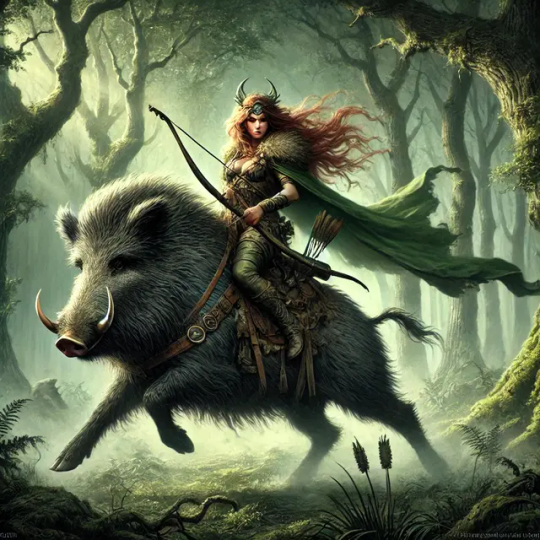
Boars in Arduinna’s World
The boar was a big deal in Celtic culture—think strength, courage, and a bit of ferocity. Arduinna riding a boar (as depicted in a bronze statuette from the region) isn’t just a cool image; it shows her as a goddess who harnesses that wild energy. She likely protected hunters who pursued boars in her forest, ensuring they respected her domain. Unlike Moccus, who’s tied to both pigs and boars with a focus on fertility and abundance, Arduinna’s link is more about the hunt and the raw, natural order. Boars, with their bristly hides and warrior vibes, fit her perfectly—no tame pigs here, just the wild cousins.

Cultural Role
Arduinna was worshipped by the local Gaulish tribes, like the Treveri, who saw her as a guardian of the Ardennes’ bounty—its game, woods, and rivers. Offerings to her might’ve included boar-related items (tusks, hides) or even small sacrifices to keep her favor. Her Roman connection to Diana adds a layer of prestige, suggesting her cult had staying power even as Gaul became Romanized.
Why Boars, Not Pigs?
While pigs were sacred in Celtic mythology (think magical swine from the Other World), Arduinna’s focus on boars aligns with her wild, forested realm. Boars were hunted for food and prestige, their pursuit a test of skill and bravery—qualities Arduinna embodies. Pigs, more tied to settled life and abundance, don’t quite match her untamed vibe, though the broader pig/boar family ties her to Celtic animal reverence.
Detailed Exploration: Arduinna and Her Boar Connection
Historical and Mythological Identity
Arduinna is a Gaulish goddess named after the Ardennes Forest (Arduenna Silva in Latin), a vast woodland spanning modern-day Belgium, Luxembourg, and parts of France. Her name likely stems from arduo ("height"), tying her to the elevated, rugged terrain she ruled (Wikipedia: Arduinna). Roman writers equated her with Diana, the goddess of the hunt, moon, and wilderness, as seen in interpretatio romana—the practice of syncing local deities with Roman ones (Mythology.net: Arduinna). This suggests Arduinna was a significant figure, revered for her sovereignty over nature.

A key artifact is a bronze statuette from the Ardennes, showing a female figure—presumed to be Arduinna—riding a boar (Wikipedia: Arduinna). This image encapsulates her as a huntress and protector, astride a creature synonymous with the wild.

Boars: Symbolism and Role
In Celtic culture, the boar was a powerhouse symbol:
War and Courage: Boar motifs adorned helmets, shields, and standards (e.g., the Gundestrup cauldron), marking it as a warrior’s emblem (Mythology.net: Arduinna).
The Hunt: Boar hunting was a prestigious, dangerous pursuit, often featured in myths like the tales of Arthur or Fionn mac Cumhaill chasing magical boars (Deity Spotlight: Arduinna).
Nature’s Might: As a forest dweller, the boar embodied the untamed strength Arduinna championed.
Arduinna’s boar-riding imagery suggests she didn’t just oversee these animals—she partnered with them. She might’ve guided hunters, ensuring they honored her forest’s balance, or protected the boars themselves as sacred denizens of her realm.
Pigs: A Lesser Connection?
Unlike Moccus, whose domain includes both pigs and boars with ties to fertility, Arduinna’s focus is narrower. Domestic pigs, linked to abundance and Otherworldly gifts in Celtic tales (e.g., swine from Annwn), don’t appear in her iconography or lore. Her wilderness setting favors the boar’s wildness over the pig’s domesticity, though both animals share a cultural thread of reverence in Gaulish spirituality.
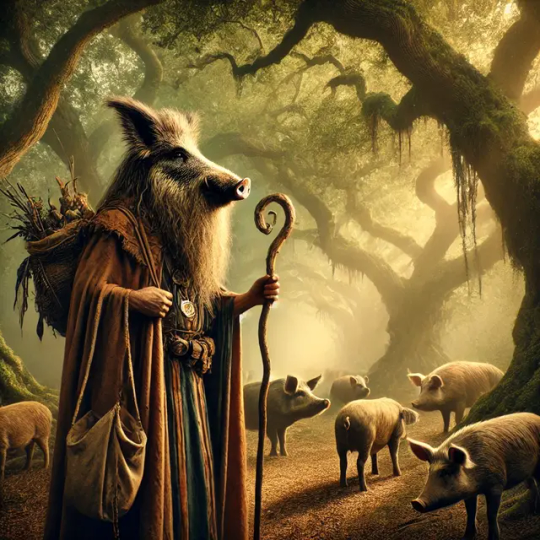
Cult and Worship
Arduinna was likely venerated by tribes like the Treveri, who lived near the Ardennes. Her worship might’ve involved:
Offerings: Boar tusks, hides, or meat left at forest shrines.
Rituals: Hunts dedicated to her, with hunters seeking her blessing for success and safety.
Sites: Natural spots like groves or springs, though no specific temples are confirmed (Old World Gods: Arduinna).
A Roman tale claims Emperor Vespasian’s troops cut down parts of her forest, angering Arduinna—a story that reinforces her as a fierce defender of her domain (Mythology.net: Arduinna).
Comparison to Moccus
While Moccus and Arduinna both connect to boars, their roles diverge:
Moccus: Male, tied to pigs/boars, fertility, and protection; possibly linked to feasts and prosperity.
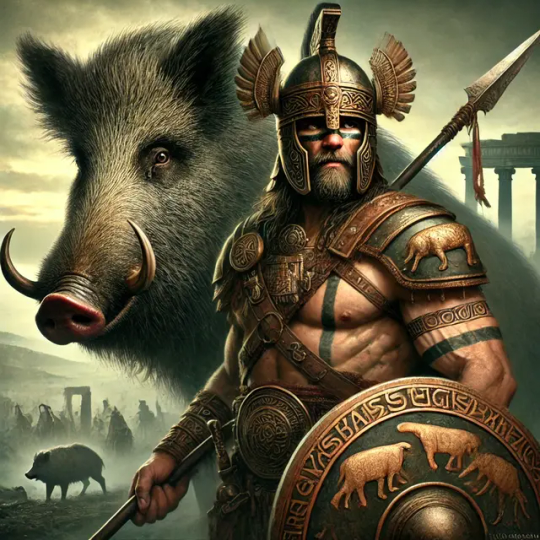
Arduinna: Female, boar-focused, emphasizing hunting and wilderness; less about abundance, more about nature’s raw power.

This contrast highlights the diversity of Celtic animal deities—Moccus nurtures, Arduinna guards.
Moccus appears to be a male deity. The name itself, derived from the Celtic word for "pig" or "boar," does not inherently indicate gender, but the linguistic and cultural context suggests a masculine identity. Additionally, Moccus was syncretized with the Roman god Mercury, who was male, further reinforcing this interpretation.
However, despite being male, Moccus embodies traits that are often associated with fertility and abundance, which are frequently linked to goddesses in many traditions. This could be why some people might wonder if Moccus had a more fluid or ambiguous divine role. In Celtic religion, gender roles in deities were not always rigid—many gods and goddesses shared overlapping domains, and boars and pigs were linked to both male warriors (as symbols of strength) and female deities (as symbols of fertility and provision).
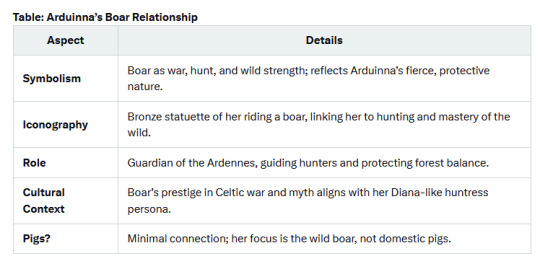
Despite the suppression of her cult, Arduinna’s memory endures through various forms. Today, one can find a beer named after her, which pays homage to her association with the forests and nature.

Furthermore, an asteroid bears her name, reflecting her celestial presence. Additionally, Arduinna’s existence sheds light on the existence of other lesser-known Celtic goddesses who embodied the spirit of the woodlands and were revered alongside Arduinna by ancient Gaulish communities.
Key Citations
Wikipedia: Arduinna, Gaulish goddess of the Ardennes
Mythology.net: Arduinna, goddess of forest and hunt
Old World Gods: Arduinna, Celtic wilderness deity
Deity Spotlight: Arduinna, Tumblr post

#pig#pigs#boar#hog#arduinna#moccus#celtic mythology#pig deities#mythology#gaulish mythology#les ardennes#dall e#grok ai#chatGBT#wikipedia
12 notes
·
View notes
Text
"Nemu's Buddhist Self-Flagellation"
So it’s been driving me nuts for years that Nemu has so many religious undertones, yet I hadn’t really taken a closer look to figure out with 100% certainty which religion it was. The tie was between Shinto, Buddhism, and Christianity. I’ve always been more partial to Buddhism, but I had to check. LO AND BEHOLD, AFTER CHECKING, THE IDIOT IS BUDDHIST. And that explains so much! And now I need to talk about it. I’ll dedicate a small section at the very bottom separate from the rest (for spoilers from later in Arc 2) to Rabi because it’s crunchy, but most of this essay might honestly be “so this is Buddhism 101” followed by “this is how it applies to Nemu and conditions her character”. Here's the same thing done for Mikoto!
I’ll be explaining concepts of Japanese Buddhism from scratch as well as exactly how they apply to the character, so don’t worry if you don’t know much about it! Note, however, that while I am not Buddhist myself, my research did come from Buddhist sources (both in text form and in the form of, well, People).
You see, as per the Agency for Cultural Affairs Religious Yearbook (I checked years 2011-2023 to account for fluctuation and the general trend of religious decline), roughly 65-70% of the population of Japan is Buddhist and/or Shintoist. The two overlap often so there’s no use trying to categorize people as strictly one or the other. If I must quote the data on Wikipedia for an easier, non-Japanese source (that is also sourced from the Japanese report):
Population figures from the Agency for Cultural Affairs Religious Yearbook 2019, as of the end of 2018, are as follows: - Shinto: 80,219,808 (63.4%) - Buddhism: 91,336,539 (72.2%) - Christianity: 1,921,484 (1.5%) - Other: 7,851,545 (6.2%) Percentages calculated using the official total population figure of 126,435,000 as of the end of 2018.
What I mean to say by this is that Buddhism (as well as Shinto, obviously) has had and still has a significant impact on Japanese culture, way of life, etc. Now, for example, we know Mikoto was raised Buddhist, we know Ryoko is Buddhist, and we know the school everyone goes to in Sankyo Ward is a Buddhist school, but in Japanese media, they often strive for a more secular approach. Plus, especially when it comes to religions like Buddhism, most of the time, unless a character is very devoted to their religion or it’s a character trait the story/writers highlight, you won’t quite notice the signs that they’re religious, and yet chances are they are.
In Nemu’s case, I looked into the way she speaks about certain topics and the words she uses, mainly. For this purpose, I scanned through the entire Japanese script of multiple stories including all of Arc 1. I don’t want to bog this down with too many examples, but I will give you one main indisputable example and mention a few other relevant things later for the actual character analysis. The example in question is simple. Nemu specifically uses the word for Avici (無間) to mean Hell a minimum of two times. That is a very specific word to use, because that my friends is the eighth and most painful of the eight hot hells in Buddhism, the hell of uninterrupted suffering, the deepest level reserved for the worst of the worst! (Nemu’s mental health is doing great why do you ask.) She also uses a word that most often refers to the Naraka realm which contains the sixteen hells of Buddhism (地獄, though this word can also refer to Christian Hell and general hell), when she’s referring to the underworld.
To double down on one of the instances where Nemu uses the word for Avici, I will be very specific and just quote the girl directly. As we know by now, during Arc 1 Chapter 10 Episode 4, Nemu had this fun thing she decided to do where she fully intended to sacrifice herself, and she made a whole death speech, right? Here’s the death speech:
Perhaps this is enough to redeem me. Perhaps with this… I can be forgiven. But if my crime cannot be repaid through any means, I accept the infinite pyres of hell. It may take 349 eons for me to earn mercy, but if I have the story of my wish to now... Even hell's trials will be a blissful dream.
“Perhaps this is enough to redeem me. Perhaps with this… I can be forgiven.” -> Buddhist concept of karma, good actions that ease suffering and cause happiness grant good karma, bad actions that cause suffering grant bad karma. The former decreases the latter.
“But if my crime cannot be repaid through any means, I accept the infinite pyres of hell.” -> This is when the word for Avici is used, and Avici specifically is described in Japanese Buddhist texts as “a vast, fiery realm with immense walls and gates” (kinda similar to Christian Hell in this sense), hence pyres.
“It may take 349 eons for me to earn mercy, but if I have the story of my wish to now... Even hell's trials will be a blissful dream.” -> In Buddhism, unlike in, say, Christianity, wherever you are sentenced to go is never eternal. The duration of a being’s stay in Avici is said to be incredibly long, sometimes described as eons or countless lifetimes. But regardless, the cycle of rebirth continues, and eventually, a being might be reborn into a different realm based on their karma. That is what she means by this, she’s not being dramatic, she’s being rather literal. Oh and for funsies, the various forms of torture people in Avici are subjected to include but are not limited to: being burned, crushed, and dismembered. These torments are not fatal, and people are continuously “revived” to experience the suffering all over again.
As for why Nemu thinks she deserves that, very simple! See, Avici basically represents the ultimate consequence of negative karma. Nemu as a Magius committed several offenses considered extremely serious in Buddhism, which were murder and lying. Maybe three if we count theft…? I am unsure if she would count any of what she did as theft. I’m assuming she is focused on the murder and most importantly the lying and general manipulation of the Feathers (likely made worse by Uwasa shenanigans). Other offenses that can lead to Avici are parricide and slandering the dharma, but those do not apply here.
The Buddhist perspective on Nemu also makes a few other things make more sense than they did before, and it brings up some interesting possibilities, but alas, I must now take a little break from being character-specific to give you a rundown on some bare basics of Buddhism. This is not exhaustive by any means.
Modern Buddhism as per its renewal during the Taisho Era is a lot more about ethical and social teachings, and if you so choose, scholarly pursuit. They put a lot of emphasis on morality, good and bad actions, karma, atonement, etc., and they did (and afaik still do) lots of social justice activism stuff. One should not conflate Western vs Eastern religions, because most of the time, there is no real equivalent between concepts, or at least, it doesn’t match closely enough. Let me explain the main branches of Buddhism a little for clarity first:
My assumption is that a majority of readers will be either Christian/other Abrahamic religion or irreligious (likely raised Abrahamic). So I’ll use Christianity to introduce this part. Christianity has many denominations like Catholic, Protestant, etc., each with its own specific doctrines and practices. Denominations typically imply a more centralized structure and a set of shared beliefs that differentiate them from other denominations within the same religion. Japanese Buddhism, however, is a broader term that refers to the various Buddhist schools and traditions that have taken root and developed in Japan. It encompasses diverse schools with varying interpretations and practices, existing under the broader umbrella of Mahayana Buddhism, which is a broader tradition and emphasizes the bodhisattva ideal (I will define what this is later) and the possibility of enlightenment for all beings. The other main branch of Buddhism is Theravada, which is not prominent in Japan and emphasizes individual enlightenment through strict adherence to the Buddha’s teachings. Therefore, in this sense, Japanese Buddhism is more like a regional expression of Mahayana Buddhism, distinct enough not to be called by the same name and with unique characteristics for its various schools of thought—which themselves may have local variations—while the core foundation remains the same. From now on, assume that different schools of thought may emphasize different aspects of the religion and different parts of it, and we have no way of knowing which specific school of thought any character belongs to.
Now, time to cover some core concepts. I want you to keep three characters in mind while we look at this, and those characters are Nemu, Rabi, and Mikoto. First of all, in honor of how they are traditionally believed to be the first teachings of the Buddha, we have the Four Noble Truths. They diagnose the human condition as suffering (dukkha) and offer a path of liberation from it. The truths in question are, in simple terms:
Suffering exists
Suffering has a cause (craving and attachment)
Suffering can be ended
There is a path to end suffering (the Eightfold Path)
We will get to the Eightfold Path in a second. Another core concept is the Three Jewels, which are the guiding principles of Buddhism:
Buddha, the historical founder (his actual name was Siddhartha Gautama) who achieved enlightenment and showed the path for others
Dharma, which are the teachings of the Buddha, including the Four Noble Truths and the Eightfold Path
Sangha, which is the Buddhist community that provides support and guidance on the path to enlightenment
Something you may have heard often in relation to Buddhism is the word karma and the concept of rebirth. Let me explain this a little more. Those are core beliefs as well, and normally some of the most important to laypeople in the modern day. It’s very simple: actions and intentions (karma) determine the quality of one’s next life in the cycle of rebirth (samsara). The goal is to escape this cycle and achieve enlightenment/nirvana, that’s what they call breaking free from the cycle of suffering and achieving a state of perfect wisdom and liberation. That is one of the two goals of Buddhism, while the other is simply helping others. In ordained groups, this “helping others” often manifests as either activism or working towards the enlightenment of all beings, it’s about the bodhisattva ideal again. Before I define what that is, let me keep talking about karma for a second.
Karma is strictly different from what Christianity calls sin, though in translations people will often go for “sin” because the concept of sin is better understood in the West than the concept of karma. Karma is literally considered a natural law, exactly like gravity. And no one entity applies gravity, do they? The same way that gravity doesn’t have morals attached, doesn’t need to be administered by a mighty god and can produce suffering in some cases and happiness in others, karma doesn’t have morals attached, doesn’t need to be administered by a mighty god and can produce suffering in some cases and happiness in others, since it can be positive or negative. The aren't any real “sins” in Buddhism as we define them in the West, because karma is not a moral system. The actions that are classified as “bad” are classified as such because they will bring more suffering to yourself and/or others. Karma simply says that there are some actions that cause happiness and peace for yourself and/or others, and others that do the opposite. If you stick to the former and not the latter, you will be happier. Because of how sins work in the West (due to, yes, the institutions that run our religions), some folks are tempted to think that if they aren’t caught stealing or harming others or whatever, they will not suffer. But, karma is a natural law and as any other natural law is therefore infallible. By those actions you have planted a seed in your mind that will ripen as suffering when the right circumstances arrive. Even if it takes until after you die.
On this note, in Arc 2 Chapter 1, when Yuna threatened to, in essence and I think literally, split Touka’s skull with her kanabo, Nemu was resigned. She didn’t react, all she said, specifically, is “I suppose that’s karma (因果応報)”. The resignation is because karma is a law of nature. It cannot be avoided. This also puts Touka and Nemu’s self-destructive attempts at atonement in a completely different light. It’s not just remorse. Yes, that’s part of it, and probably the majority of it on Touka’s side, but on Nemu’s? Punishment is inevitable, so they might as well take the bulk of their punishment into their own hands (something something issues with control). Besides, as we saw in Christmas String, both girls believe themselves to be bad by nature, unable to help others or be kind no matter what they do, and Nemu in her hospital clothes costume story, towards the end, also says that being with Ui highlights just how twisted/bitter/perverse she herself is (the line is 自分がどれだけ捻くれてるか 本当に自覚させられるけど). Touka and Nemu do not for a second believe they are capable of accruing good karma, and especially not enough to cancel out all of their bad karma from the Magius era. They’re wrong, obviously, we know that, but they’re just little traumatized babies so we forgive them for being a little bit stupid. Particularly funny with how all of Christmas String was them doing good deeds, most of it of their own free will for a pair of children they didn’t even know at all. But I digress.
Since I mentioned the bodhisattva ideal again earlier, now’s a good time to define what that is. For this paragraph, keep Iroha and Ui in mind. A bodhisattva is a being who has vowed to achieve enlightenment and is perfectly capable of it, but chooses to remain in the cycle of rebirth to help others reach enlightenment as well. They are motivated by immense compassion (called karuna) for all sentient beings, and they are defined by selfless service. Their goal isn’t personal liberation alone, but the liberation of all beings from suffering. Key practices and characteristics of theirs are qualities like generosity, morality, patience, effort, meditation, and wisdom, engaging in acts of kindness and service to benefit others, and using various methods to teach and guide others based on their needs and understanding. Buddhism’s compassion tenet in general is specified as compassion and understanding towards others and towards yourself. But yeah, I don’t think I have to explain why I said to keep Iroha and Ui in mind during this paragraph. I do find it crunchy when a Buddhist character sees another as “unreachable” and puts them on a pedestal because of how Buddha-like they are (embodying the virtues of Buddhism, the bodhisattva ideal).
Moving on, the Eightfold Path is a fundamental concept in Japanese Buddhism just like it is in all other forms of Buddhism. It outlines the path towards liberation from suffering as described in the Four Noble Truths. It’s traditionally divided into three categories:
Wisdom, which refers to developing right understanding and right thought
Ethical conduct, which refers to practicing right speech, right action, and right livelihood
Mental discipline, which refers to cultivating right effort, right mindfulness, and right concentration
The reason it’s called the Eightfold Path is because it has Eight Practices, which are as follows:
Right View, which means having a clear understanding of the Four Noble Truths and the nature of reality
Right Thought, which means cultivating wholesome thoughts free from greed, hatred, and delusion
Right Speech, which means speaking truthfully, kindly, and avoiding gossip or harmful speech
Right Action, which means acting ethically and non-violently, respecting all living beings
Right Livelihood, which means earning a living through honest means that do not harm others
Right Effort, which means putting in the effort to cultivate positive qualities and overcome negative ones
Right Mindfulness, which means being fully aware of the present moment, your thoughts, feelings, and bodily sensations without judgment
Right Concentration, which means developing a state of focused and clear mind through meditation practices
The Eightfold Path is also not a linear progression, but rather a set of interconnected practices that support each other. By cultivating these practices, individuals can gradually progress on the path to enlightenment, or at least that’s what is taught. As a result of the Eightfold Path, common core practices include meditation, ethical conduct, and compassion. Meditation serves to develop mindfulness, focus, and inner peace, though practiced more among the ordained population. The ones most practiced and most highlighted among the laypeople are ethical conduct, which is just following moral principles like non-violence (ahimsa), truthfulness, and simply Not Stealing, and compassion, which is just about empathy and understanding for all living beings.
Let me be clear, there are precepts of behavior in Buddhism and things that are seen as bad/frowned upon for them. Generally, they all cause suffering, except for intoxicants, which attempt to flee from suffering (which doesn’t lead anywhere good, according to Buddhists). It’s stuff like no intentional murder (especially your mother and father), no stealing, no lies, no intoxicants, no sensual misconduct (such as rape or adultery). This last thing is sometimes translated as “no sex at all” due to how prevalent that kind of doctrine is in Abrahamic religions, despite the fact that it’s only in some Buddhist traditions, particularly Theravada Buddhism, that monks and nuns specifically take vows of celibacy as part of their monastic commitment so they can focus entirely on their spiritual practice and detachment from worldly desires. Laypeople from either branch don’t, and neither do monastics of the Mahayana branch, which is the umbrella Japanese Buddhism falls under. The only thing about it is that since the focus of Buddhism for practicing laypeople is on ethical conduct, practicing faithfulness within a relationship and making sure that relationship is healthy is hugely important.
Neeeeext up, the kleshas (煩悩). The kleshas are important and often translated as mental defilements, poisons, or afflictions. In essence, they represent the Unwholesome Mental States that cause suffering and hinder us from achieving enlightenment. A lot of the main kleshas match up with the Christian concept of the Seven Deadly Sins, but again, they are treated more as weeds in a garden and something you have to work through than “Oh You Are BAD Because You Did A Bad!!!”. Buddhism teaches that kleshas are not permanent fixtures in our minds, and so with effort and practice, they can be weeded out. Understanding the kleshas just helps us identify the root causes of our suffering, and by recognizing these Mental Defilements:tm:, we can work on purifying our minds and cultivating positive qualities like compassion and wisdom. The Buddhist practices I’ve mentioned (like meditation) are, in theory, designed to help us overcome the kleshas and achieve a state of inner peace and clarity. The kleshas are bad because they prevent us from experiencing true peace and happiness, which is what the Buddhist teachings are trying to help with.
Interestingly, you know what’s considered a klesha? Ignorance. Ignorance (or delusion), described as a lack of understanding about the true nature of reality, leads to confusion and making poor choices, hence why it’s counted as a klesha. To touch on the ones that match the Seven Deadly Sins for a few examples, envy is defined as resentment towards someone else’s good fortune, which creates negativity and dissatisfaction in yourself. Arrogance (pride) is defined as an inflated sense of self-importance, which causes disconnection from others. Feeling rage (wrath) and the like causes us to lash out or become bitter. Hatred can cause us to act in harmful ways and damage our relationships, not to mention the number it does on our own emotional energy. You see how this works, right? Buddhism isn’t telling you that you’re bad for having human thoughts and emotions and you’re going to BURN unless you pray really hard, it’s gently putting a hand on your shoulder and telling you, hey, you’re hurting yourself, let’s try to help you. However, it does put the responsibility of improving yourself right on your shoulders. That’s your job. Be better. Which… can be hard. Particularly if you’re convinced you can’t do that.
Another commonish concept in Japanese Buddhism is that of honne (本音) and tatemae (建前). It’s about the duality of inner thoughts (honne) and outward expressions (tatemae) in Japanese culture. While not strictly a Buddhist concept, it resonates with Buddhist teachings on impermanence and the constructed nature of reality, and I figure it’s especially relevant in a society that is so high context and polite (and, hey do not externalize your problems or cause trouble for The Collective okay?). The characters to think about here are Nemu with repressed bitterness and anger, and Mikoto with very outwardly expressed bitterness and anger. Mikoto is obvious, and because she was obvious, she got attention. I won’t speak too much about her because someone else is preparing to do so. Nemu, however, internalizes all of her problems and emotions, mostly for people pleasing reasons, as I explained in my other essays, but this is most likely affected by her religious leanings. The scholarly side of Buddhism fits Nemu particularly well.
As an aside before I tell you about Buddhist cosmology, let me explain a little something. If Nemu is a Buddhist, why did she do everything she did as a Magius? Simple. “The good this will do and the happiness I’ll bring to all Magical Girls in the present and the future will outweigh the bad” and if you think about it, becoming a witch means you are doomed to wander in eternal suffering which goes against everything Buddhism stands for. So, in light of that worst case scenario that isn’t even acknowledged by greater society, Nemu will make the sacrifice for the good of the many, to save them. She wants to save magical girls so bad, for both selfish and selfless (+religious) reasons. She was thinking the same way we saw her think in Arc 1 Chapter 10 Episode 4, which was “if I make this great big sacrifice for the sake of good, maybe I’ll be forgiven”. Much like part of why she minimizes her own pain so much is because of the Four Noble Truths telling her that suffering is everywhere and that being alive is suffering—further supported by her being terminally ill and hospitalized for presumably her entire childhood (since her brother acts like she’s a complete stranger), which is not exactly conducive to optimism or to seeing the love and light in the world.
Another extra note on Nemu’s philosophy that is sort of unrelated to the rest of the essay but I had to put it somewhere: Japanese culture is also influenced by Confucianism, which emphasizes filial piety (respect for parents) and respect for teachers. These concepts unfortunately might blend with Buddhist principles in parent-child and mentor-pupil relationships. That and the people pleasing are two of the big reasons Nemu acts the way she does with her family, her parents in particular. She feels the weight of a perceived duty to one’s parents and family, and she doesn’t think she can criticize her parents even when she’s frustrated and/or angry about their behavior, not even behind their backs. Since before she shared a room with Touka and Ui, she most likely spent almost all of her time reading, she most definitely clings to the concept of filial piety as a sort of behavioral guide in her desperation to be loved by her parents. Imagine her alone in the dark, bedridden and in pain, after lights out, crying quietly on the pages of a book about Confucian philosophy and thinking about this, starved for affection and so confused as to why it’s not working. The answer has to be that she’s a burden. Her medical bills, sending her clothes, visiting her, all of it is a burden to her parents. She tries to be as out of the way as possible, as helpful as possible, in hopes of making up for it.
*COUGH* Anyway. Japanese Buddhist cosmology adopts the core ideas of general Buddhist cosmology, but incorporates some unique elements influenced by Shinto beliefs, as you might imagine. For example, for the afterlife journey, the Sanzu River is uniquely important in Japan. It’s usually symbolic (and you can think of it as similar to the Styx in Greek religion), and it’s what separates the world of the living from the afterlife. The difficulty of crossing (calm bridge, rough ford, treacherous shoals) reflects the severity of the deceased’s karma. Based on a being’s karma, they are judged and reborn into one of the six realms, where they will stay temporarily until their karma returns to zero (upon which they will be reborn again into a different realm, as far as I understand).
“Nahi, what do you mean by realm?” Ah! Let me explain. In Buddhism, there are six realms we can exist in. The Six Realms of Existence are:
Deva realm (Heavens), a realm of pleasure and happiness, but temporary as beings' karma depletes.
Asura realm, a realm of jealousy and conflict, where beings constantly compete for power and resources
Human realm, the realm of ordinary humans, characterized by suffering, impermanence, and the opportunity for spiritual growth
Animal realm, a realm of suffering and limited consciousness, where beings are at the mercy of their instincts and predators
Preta realm, a realm of insatiable hunger and thirst, where beings cannot find sustenance
Naraka realm (Hells), basically the realm of intense suffering caused by negative karma
Of course, when a being is sentenced to one of these realms after death, its stay there is never permanent. Japanese Buddhism adheres to the concept of eight hot hells and eight cold hells within the Naraka realm. Each of the hells might be further subdivided into even more specific hells with unique punishments. The eight hot hells are characterized by intense heat, fire, and torture. Pretty similar to most depictions of Christian Hell in that sense. The severity of punishment increases as you descend deeper (something something Divine Comedy). I am unsure if they have actual English names, my source was Japanese, I tried my best here. The eight hot hells are as follows:
Burning Hell (焦熱地獄): sinners are tormented in a blazing inferno
Hell of Black Ropes (黒縄地獄): souls are bound with black ropes and sliced with burning blades
Crushing Hell (衆合地獄): beings are crushed by immense boulders or pressed together in a confined space
Screaming Hell (叫喚地獄): souls endure excruciating pain that forces them to scream incessantly
Great Screaming Hell (大叫喚地獄): even worse than the previous one, with even more intense pain and screaming
Iron Pot Hell (極楽地獄): souls are boiled alive in giant iron cauldrons
Changing Hell (正変地獄): sinners experience constant transformations into different tortured forms
Unremitting Hell (無間地獄): the deepest and most severe hell, with relentless suffering without respite
This last one is Avici, Nemu’s preferred destination apparently. As for the eight cold hells, they are characterized by extreme cold and icy torment. And I give up on trying to translate their names, so here they are:
Hell of Arbuda (鞕抜地獄): souls experience excruciating pain as their bodies develop chilblains that burst open
Hell of Nirarbuda (鞕抜地獄): a continuation of the previous hell, where the chilblains worsen and constantly burst
Hell of Atata (閊陀地獄): souls shiver uncontrollably in the intense cold
Hell of Hahava (臛���婆地獄): sinners lament in the cold, making "haa" sounds due to the pain
Hell of Huhuva (虎虎婆地獄): souls chatter their teeth uncontrollably due to the extreme cold (yes I know this sounds similar to Atata)
Hell of Utpala (鬱波羅地獄): the intense cold turns the skin blue, resembling a blue lotus flower
Hell of Padma (鉢特摩地獄): blizzards crack open frozen skin, revealing raw and bloody flesh
Hell of Mahapadma (摩訶鉢特摩地獄): the entire body cracks open due to the intense cold, exposing the internal organs
Alina would love some of these. I’m sure she does. But, yes, that rundown was mostly to show you that there are many, many words for Hell that a Buddhist can use, and Nemu specifically used the abbreviation for Avici (無間). So as far as I’m concerned, that and the few other subtler things point towards her being a Buddhist, and it makes for a more interesting interpretation of the character. Nemu has so much trauma and as it turns out, part of it has a religious flavor. Lovely!
To end this off on a positive note, I have this thought for you. Touka and Nemu's final state as Uwasa Queens technically counts as nirvana, enlightenment. They made a selfless sacrifice, let go of all worldly attachments, escaped the cycle of rebirth (since I do not think an uwasa is part of that?). They are at their wisest and kindest, at their best in all ways and are also doing good, honest work and making an effort for the happiness of others. It may not look like the traditional way of achieving nirvana, but... It is definitely their nirvana.
I will write one last very brief section about Rabi, but the essay/lecture has pretty much come to an end here.
Rabi’s entire status of resignation reminds me a lot of Nemu’s. Rabi is resigned to suffer and keeps advancing the hand on her watch and doomposting, despite the fact that it is entirely her choice to do that. In the uh… I hesitate to call it “grand finale of Folklore’s arc” near the end of Arc 2, what she wants to do is end all magical girls to ease suffering. It’s very Buddhist. That’s all.
39 notes
·
View notes
Text
STRANGE DAYS (1995) KALIFORNIA (1993) *JULIETTE LEWIS
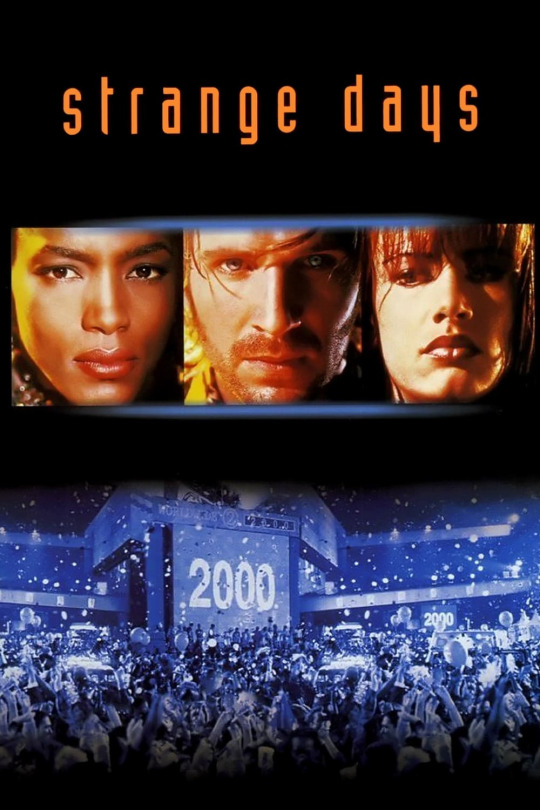
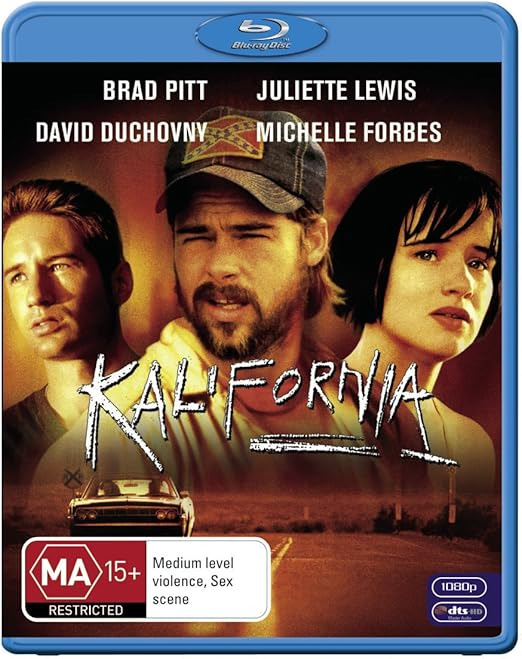
These two double feature films I am presenting today owes it to Juliette Lewis images on my reblog random rampage selection by a Tumblr blogger actress-playground who has been posthumously deleted.

Strange Days is a 1995 American science fiction thriller film directed by Kathryn Bigelow, from a screenplay by James Cameron and Jay Cocks, and based on a story by Cameron.

Juliette Lewis (22) in Strange Days (1995)
The movie blends science fiction with film noir conventions, Strange Days explores themes such as racism, abuse of power, rape and voyeurism. Although the story was conceived by Cameron around 1986, Bigelow found inspiration from high profile incidents such as the Lorena Bobbitt incident and the 1992 Los Angeles riots.

The film was a major commercial failure, Strange Days nearly derailed Bigelow's career. The film polarized critics upon release, while some praised the cinematography, visual style, and performances of the cast, others criticized its portrayal of rape and violence. Its critical standing has improved over the years, gaining a cult following. At the 22nd Saturn Awards, where the film received five nominations, Bassett won Best Actress and Bigelow became the first woman to win Best Director.
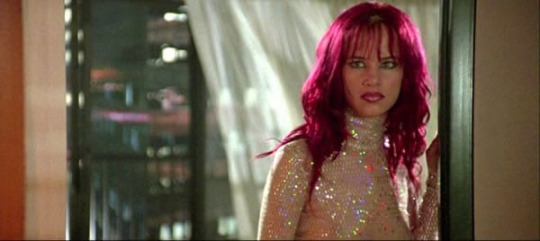
Upon release, Strange Days polarized film critics. Roger Ebert, who gave the film four out of four stars, described it as "a technical tour de force" and highlighted the film's astute use of SQUID technology, stating that "Bigelow is able to exploit the idea of what is happening; she forces her audience to deal with the screen reality, instead of allowing us to process it as routine 'action.'"

Set in Los Angeles on the last two days of 1999, the film follows Lenny Nero (Fiennes), a black marketeer of an electronic device that allows a user to experience the recorded memories and physical sensations of other people, and Lornette "Mace" Mason (Bassett), a bodyguard and limousine driver, as they are drawn into a criminal conspiracy involving Nero's ex-girlfriend Faith Justin (Lewis) and the murder of a prostitute.
Strange Days (film) - Wikipedia
A former cop turned street-hustler accidentally uncovers a conspiracy in Los Angeles in 1999.
Strange Days (1995) - IMDb 7'2
lilnk https://ok.ru/video/2187715807871

Kalifornia is a 1993 American road thriller film directed by Dominic Sena, in his feature film directorial debut.

The movie was filmed in Georgia and rural inland California.in the spring of 1992. The movies was a box office bomb. The film received mixed reviews from critics with some praising its art house sensibility, while others dismissed it as a violent exploitation film. Despite this, the film's acting was largely praised, and critic Roger Ebert heralded the performances of Pitt and Lewis among the best he had ever seen. The film was nominated for three Saturn Awards in 1994, including for Best Horror Film.

The film tells the story of a journalist (Duchovny) and his photographer girlfriend (Forbes) traveling cross-country to research serial killings, who unwittingly carpool with a psychopath (Pitt) and his childlike girlfriend (Lewis).
LINK https://ok.ru/video/2190371392127
NOTES
Just a quick note about our protagonist:

Juliette Lewis (20) in Kalifornia (1993)
Juliette Lake Lewis (born June 21, 1973) is an American actress, singer, and musician. She is known for her portrayals of offbeat characters, often in films with dark plots, themes, and settings. Lewis gained prominence in American cinema during the early 1990s, appearing in various independent and arthouse films. She has received various accolades, including nominations for an Academy Award, a Golden Globe Award, and two Primetime Emmy Awards. (Go to Juliette Lewis - Wikipedia for more info)
List of Juliette Lewis performances - Wikipedia
#1251#film#strange days#1995#dir. Kathryn Bigelow#kalifornia#1993#dir. Dominic Sena#juliette lewis#2025-04-21
7 notes
·
View notes
Text
Story is identical twins got circumcisions and one of them was messed up so badly there'd never be a "normal" penis. Fuckwad psychologist (why is it always these old cis white men psychologists that are the worst) decided to use this chance to prove his hypothesis that gender identity is entirely learned through social conditioned and tried various abusive and medical ways to make David a girl including reproductive surgeries, feminizing hormones, socialization, and whatever the fuck this is:
"Money theorized that reproductive behaviour formed the foundation of gender, and that "play at thrusting movements and copulation" was a key aspect of gender development in all primates. Starting at age six, according to Brian, the twins were forced to act out sexual acts, with David playing the female role—Money made David get down on all fours, and Brian was forced to "come up behind [him] and place his crotch against [his] buttocks". Money also forced David, in another sexual position, to have his "legs spread" with Brian on top. On "at least one occasion" Money took a photograph of the two children doing these activities.[24]
When either child resisted these activities, Money would get angry. Both David and Brian recall that Money was mild-mannered around their parents, but ill-tempered when alone with them. When they resisted inspecting each other's genitals, Money got very aggressive. David says, "He told me to take my clothes off, and I just did not do it. I just stood there. And he screamed, 'Now!' Louder than that. I thought he was going to give me a whupping. So I took my clothes off and stood there shaking."[24]"
"Both David and Brian were traumatized" no shit.
Anyways it failed. And the psychologist went on for years touting this case as proof that he was right despite every bit of evidence point to him being wrong. David continuously insisted in childhood that he was male and lived as male in adulthood after being suicidally depressed because yeah between the everyone telling him he's a girl, the forced body modification, and the sexual abuse by dr. ego. And the trauma carried through into adulthood he killed himself at age 38.
Now this is just one case if this happened to 1000 identical twin pairs maybe some of them would have identified as female what's more important is how even though David was not intersex his case highlights many of the struggles of intersex and transgender people. I mean he was assigned a gender shortly after birth and raised as that gender but always felt it was wrong and the people around him did everything to make him female. Is that not the trans experience. Gender is complicated and this case rejects dr. fuckwad's single souce explanation. Gender arises from the interplay of internally derived gender identity, gender presentation and performance, and social interplay. Gender is complicated and it's components and relationship with a person are unique to everyone. There's a lesson here too on forcing unnecessary medical procedures on intersex infants and children without their consent or sometimes against their wishes all to better conform them to a binary when even among non intersex people there is amazing diversity among bodies. And it's important that those same procedures forced on intersex infants from gonad removal, to genital reconstruction (making genitals and sticking them on), masculinizing or feminizing hormones, are the exact ones often denied to transgender teenagers who want them. Even as adults it's hard and sometimes practically impossible to get gender affirming medical care. But the right has never cared about being hypocrites only about making the world worse for the greatest number of people.
24 notes
·
View notes
Text
Remember 1968 and 1980
if you wonder why politically involved progressives and leftists are so up in arms about the Harris/Walz campaign needing a stronger stance on israel pragmatically, it is easy to understand if you study the presidential campaigns of 1968 and 1980 (where the Democrats lost, once after changing an unpopular 1 term president, and another time after another 1 term president). Even if you are completely cynical on palestinian lives, or if you just prioritize domestic policies more, please read on. Keep this in mind: Elections aren't won on hype and good feelings alone. it is a huge political liability the situation we are in now. It is irrelevant whether Trump is worse for Gaza. That isn't the political calculation. Trump, like Nixon and Reagan before him, doesn't care about the United States of America. He wants to win. And he will use every tool at his disposal including phoning his good friend Benjamin Netanyahu. And right now Trump's campaign is on the backfoot, and like a wounded animal it will lash out.
You don't win an election by making every leftist a Harris cheerleader or making them promise to vote in Novemeber. You need to neutralize political threats. I know a lot of people think October Surprise refers to Hillary Clinton's emails, but it refers to the Iran-Contra hostages of 1980. US hostages were held in Iran for 444 days. And here is the tl:dr; Members of the Reagan campaign extracted concessions from Iran to delay the hostage transfer, and the hostages were released MINUTES after Reagan was sworn in as president. Let me spell this out. Netanyahu met with Trump recently. They are friends. You don't think they struck a deal to wrap up the Gaza war on jan 21, 2025, in exchange for his protection when he leaves office? Or alternatively, to escalate the devastation to the entire region a week before the election?
The other election I want to highlight is 1968. This election was a referendum on the Vietnam war. Robert F Kennedy was shot before the convention, and there was a contested convention as a result. (keep in mind Harris won't have a divided campaign, so this part isn't analogous). The candidate who narrowly eked out victory, Humphrey, was only "moderately" (i.e. status quo) anti-war. They refused to compromise with the candidate with a more stringent antiwar position and riots broke out. This is not what caused them to lose, mind you, but it was a SIGN of what the electorate wanted. But as the general campaign picked up, this became a liability. From wikipedia: "Nixon led in most polls throughout the campaign, and successfully criticized Humphrey's role in the Vietnam War, connecting him to the unpopular president and the general disorder in the nation. Humphrey experienced a surge in the polls in the days prior to the election, largely due to incremental progress in the peace process in Vietnam and a break with the Johnson war policy. " Neither situation is directly analogous to Israel-gaza. But if israel declares war on iran, and us troops need to be involved in october? You better believe the american electorate will care and it will be a perfect storm. And *that* is the pragmatic case for a much stronger stance on the ceasefire, not just waiting for it to happen. Even if you don't care about palestinian lives, this is why this is important. Let's not leave this to the last minute and the status quo. This is what you should be scared of, not if "messaging will harsh the vibes". History doesn't repeat itself, but it rhymes.
28 notes
·
View notes
Text
I've talked about Amanda Ripley's disaster survival book The Unthinkable before, and it turns out there's a new edition for 2024, if that's additional incentive to check it out. Today I'm remembering her chapter about Robert Olian, a bystander who attempted to rescue the survivors of Air Florida Flight 90 after the crash in the Potomac in 1982.
Olian saw the crash, and he and a few other witnesses stood on the shore of the freezing river, tied together a makeshift lifeline of scarves and jumper cables, and he set off with it to try to reach the survivors.
He was only a tiny portion of the way there when he realized he had bitten off way more than he could chew. As Ripley puts it:
At that point, Olian was just halfway there. He'd been in the water for about fifteen minutes. If it took another fifteen minutes to get to them, and it would probably take more since he was exhausted now, what would he do next? If he somehow summoned the strength to carry every one of them back across the football-filed length of water, it would take yet another thirty minutes at least. Realistically, there was no way his body--or the survivors--could last another forty-five minutes in that water. He remembers staring at the tail section of the plane and noticing how smooth it was. Even if he made it out there, there might be nothing to hold on to, he thought. "I was pretty sure I was gonna die," Olian says. "But that was OK. I had an internal calm and good feeling about that. I was not going to turn my back on those folks."
As you can tell from the bits of present tense, Olian did survive--a helicopter arrived and headed for him, thinking he was one of the plane passengers. He waved it toward the actual passengers to rescue them, while his fellow bystanders-turned-rescuers hauled him back to shore by the rope that was still tied to him.
Looking back, he said his motivation was a mix of overconfidence - at the time he jumped in, he truly believed he'd be strong enough to reach the survivors and help them, underestimating the depth of the water - and insecurity: he would have felt like a coward if he hadn't tried to help. And "If rational thought had entered my head at any point, I wouldn't have done it."
He didn't take off his steel-toed boots or remove the five pounds of keys in his pockets. He just jumped in. He needed to let those people know someone was trying to save them, he said later. That was all. "They had to see someone right now. If I was ever confident of anything in my life, it was this," he says in his slow, methodical way. "Worst-case scenario, I would be totally ineffective in saving them, but at least I would give them hope."
And in the end, according to the survivors, he did. Watching a guy try to swim to you with a rope is at least something to do while you cling to the wreckage of your plane; the hope he might make it also gave them the motivation to keep clinging on and keep their heads above the freezing water. They survived long enough for the helicopter to arrive (one of the six surviving passengers, Arland D. Williams Jr., was caught on the wreckage and rather than spend time trying to work himself free, passed the rescue lines the helicopter dropped to the other five. Tragically, by the time rescuers returned to get him, he had drowned. He received a number of posthumous honors including a stretch of the repaired 14th Street bridge being named for him. Ripley gives Williams short shrift in her book and highlights examples of heroism from the other five passengers, but his Wikipedia page has links to other accounts in his honor.)
I guess some of this could be turned into an object lesson somehow. The importance of hope, observations about selflessness and heroism, the advice to, if you must attempt to swim across a frozen river, at least make sure someone's tied a cable to you so they can haul you back. Olian's always stuck with me as an example of a hero who failed in his rescue attempt and, if you were to be highly cynical, made a bit of a fool of himself - and yet he's inspiring all the same.
#people being people#air disaster cw#death cw#Amanda Ripley#Robert Olian#honestly I'm kinda irked at Ripley on Williams' behalf#she sort of views him as a quitter because right after the crash he predicted he was going to die and he did#but his 'I'm doomed' led him to help the others who *weren't* doomed so. whatever. give the man a break and an honorary bridge
4 notes
·
View notes
Text
They Cut the Signal: A Firsthand Account Documenting the Truth During a Media Blackout
When corporate Democrats controlled the narrative, our stories weren’t just ignored — they were buried, edited out, and erased.
I witnessed it firsthand. A media blackout isn't merely about omission; it's a deliberate act to suppress information that threatens powerful interests. Both major parties have employed this tactic: Republicans during events like the Standing Rock protests and the Capitol Police whistleblower testimonies, and Democrats — as I experienced directly in San Diego — through the silencing of grassroots tenant struggles, the erasure of police abuse victims, and the quiet protection of developers and political allies who profited from community displacement. And it’s entirely possible this wasn’t confined to just one city. The patterns I witnessed — silence from organizations, ignored press inquiries, and a coordinated lack of response — suggest that this kind of suppression may have been happening throughout California.
This strategy aligns with a historical pattern observed during coups and periods of unrest, where those in power seize control of centralized information channels to suppress dissent. As highlighted in the Private Internet Access article, authorities often rally to these chokepoints to cut off and control the information flow, denying broadcasting ability to others. Conversely, challengers have historically relied on decentralized networks of volunteers to disseminate information and counteract censorship. This dynamic has played out repeatedly, from the era of the printing press to modern digital platforms.
Despite the gravity of what many endured on the streets, organizations and media outlets that professed a commitment to justice remained silent, prioritizing their political alliances and reputations over truth.
This pattern isn't confined to local politics — it's a global phenomenon. Governments worldwide have increasingly used internet blackouts to stifle dissent, disrupt organizing, and conceal abuses. In Sudan, Egypt, Ethiopia, and Sri Lanka, authorities have cut off internet access during critical moments of unrest. These shutdowns, often justified as measures to maintain order, effectively serve to control narratives and suppress resistance. As reported by Al Jazeera, such blackouts obscure violence, censor movements, and limit the visibility of opposition.
Further illustrating this trend, Rest of World reported on Kazakhstan's five-day internet shutdown in January 2022, during which state media claimed calm had been restored, even as gunfire echoed outside citizens' windows. Activists described the blackout as an "information vacuum," allowing authorities to propagate their version of events unchallenged. This tactic isn't unique to Kazakhstan; the article highlights how authoritarian regimes have increasingly found ways to "turn off" dissent by controlling digital infrastructure.
But the struggle for control over digital spaces doesn’t only play out in authoritarian states. In the United States and other democracies, censorship often takes a more insidious form. As the Centre for International Governance Innovation noted, the 2012 internet blackout protests against SOPA and PIPA — in which over 100,000 websites, including Wikipedia and Reddit, went dark — were a landmark moment in digital resistance. While those protests succeeded in halting the legislation, the victory was largely symbolic. In the decade since, governments have increasingly relied on informal partnerships with tech companies to regulate speech through opaque algorithms, shadow bans, and selective content suppression. These "shadow regulations" have created new layers of censorship that are harder to track and challenge, allowing state-aligned actors to quietly shape public discourse without the need for formal laws.
Media blackouts have a long history as tools for controlling information. A case study from Toronto Metropolitan University highlights how, during the early 20th century, Western media censored reports on the bombings of Hiroshima and Nagasaki, as well as the Vietnam War and the devastation of Agent Orange. Countries like China and North Korea continue to enforce geographically-delineated media blackouts to this day. The globalization of media and instantaneous access to international news have made it increasingly challenging to enforce such blackouts effectively.
In the United States, suppression doesn't always involve cutting off internet access. It can manifest as ignored press releases, throttled social media posts, unpublished stories, or bureaucratic obfuscation.
Women were being assaulted by police and abducted under complete blackout — no media coverage, no organizational response, no public outcry. I saw it in San Diego, and I have reason to believe it was happening elsewhere across the state. I knew, by the many individuals following me — some on foot, some in vehicles — that I was going to be next.
Determined to break through this silence, I confronted elected officials directly the only way possible, organized my own peaceful protests, and meticulously documented events — not just to tell the truth, but to make it impossible for them to erase it. This became my solitary protest — not by choice, but because the community had failed me. Still, I knew, from the many times I had been in danger throughout my life, that I could only rely on myself. It was the only means to document, in real time, the things that were happening — because my safety, and even my life, was at stake.
To those who couldn’t understand why I was so hypervigilant after being put in danger nearly 24 hours a day: I’m glad they showed me they were never in my corner to begin with.
A glimmer of hope did emerge as cracks appeared in San Diego’s power structure: Rick Gentry of the San Diego Housing Commission abruptly stepped down; Tom Lemmon of the Building Trades exited; the president of the San Diego Police Officers Association left his post; and the Chief of Police announced his retirement, followed by a wave of officer resignations.
The timing was conspicuous, especially since many of these individuals had received my emails demanding accountability.
While the media offered one version of events, I can’t help but feel I pushed it along. The entire point of direct outreach was that people had been dodging communication intentionally — but once I emailed them, they couldn’t ignore it. After everything that happened during the media blackout, I’ve learned to take mainstream coverage with a grain of salt. I saw too much silence when it mattered most to ever fully trust their framing again.
Sources
A History of Media Control and Media Blackouts in Coups d'Etat
Internet blackouts: The rise of government-imposed shutdowns | Science and Technology | Al Jazeera
Ten Years After the Internet “Blackout” Protests, What Have We Learned? - Centre for International Governance Innovation
Blackouts: a brief history - Journalism Cases from Canada
2 notes
·
View notes
Text
" what make some faerie books so bad ? "
one of worst offenders is when writers treat faerie as generic umbrella term . look no further than this snippet from real life actual book kossai own :
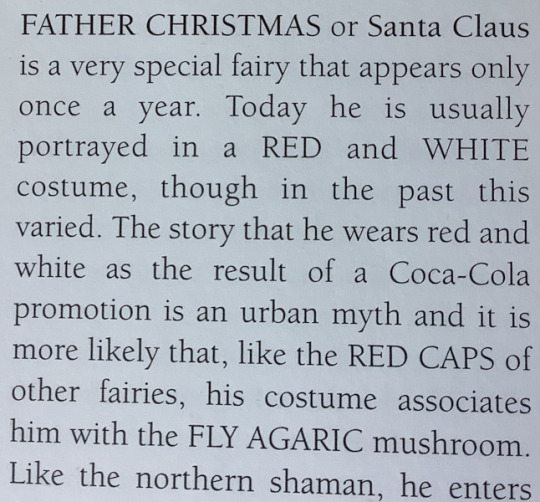
faerie / fairy is not always word cultures apply from inside , but rather word which academics use to describe those cultures . sometimes that can work out just fine , especially where stories and figures within have common threads and geographical similarity that very clearly link to one another . but this is part of why definition of faerie is hard and wishy-washy - where do boundaries lie of what is and is not faerie ? academically , that answer is not always easy .
but alongside ghost , spirit , and god , faerie also gain some prevalence as this umbrella term , which often come to simplify and fetishise foreign folklores . choose to highlight this father christmas example as hopefully shed light on why this is silly approach if nothing else , but this book also contain plenty of generalisations , simplifications , and misconceptions about stories and figures from across asia , africa , and indigenous peoples everywhere .
this particular passage assert fly agaric connection with ... no real proof at all , just " like other fairies " . and that is fairly common through this book , there is no actual analysis of folklore to determine these things . there is also something which feel to be insidious about assign faeriehood to explicitly christian figure of explicitly christian holiday ... not to mention use of shaman - which also gain prevalence as something of umbrella term , despite this word belong to specific culture and not accurately describe other cultures .
this is not problem in every single faerie book , and can expect to some extent that books under faerie umbrella may include variety of different folklores . but check and understand why ! do these places exist in close proximity , possibly share stories with one another ? is there actually some thread which tie together these stories and figures ? is there genuine research to back up claims of connections and details ? or do this seem more like someone skim wikipedia to find something exotic to talk about ?
6 notes
·
View notes
Text
⚠️ [RECAP] Meghan at Uvalde, Texas on 26th May 2022 after the Robb Elementary school mass shooting. A Master Post including Thomas Markle's stroke
A Sinner asked for some references for why Meghan's pap walk in the immediate aftermath of the Uvalde school shooting and why it is still considered unforgivable by so many Sinners.
I went to look for a source post but its is scattered all over this sub, twitter (X) and the internet. So I thought I would create a master post for future reference. Please note that I wasn't on the ground that day and don't know have first hand knowledge. We had two Sinners (Feisty_Nurse and BubbleGum_Yum_Yum) who were on the ground and I have included their relevant comments. Both Sinners are considered to be credible to me. I will share their comments of their experience here.
There are follow on posts from Sinners which I will share. You will need to read them for full context.
... means that a portion of text is used and click on the link for full context
Those who can and want to support the Children in Texas, this is org is recommended by BGYY Texans Care for Children website link.
______________________________________________________________
The Uvalde school shooting occurred on the 24th of May 2022 at an elementary school. The gunman, Salvador Ramos, killed 19 children, 2 teachers and injured 18 others. Robb Elementary School would have had children who are primarily from the ages of 4 to 10 years of age. [Wikipedia source for school shooting].
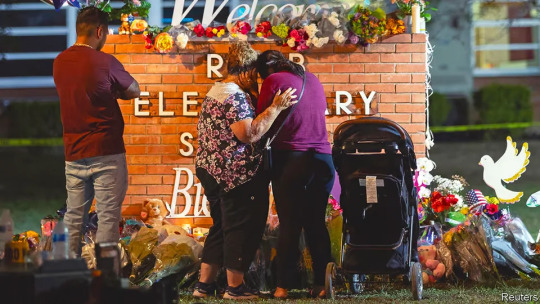
Photo 1: Regular people paying their respects at the school
On the same day (24th May), it was reported that Thomas Markle Sr suffered a major stroke days before he was about to fly to London for the Queen's Jubilee. [Dailymail archive link]. The trip to London was meant to be a big deal. He was going to be on GBNews and hang out with Lady C.

Photo 2: Thomas Markle Sr rushed in hospital after stroke. Photo taken by Backgrid
Meghan flew to Uvalde on a private jet, Texas 2 days after the shooting on the 26th of May. Here are the highlights of the photographs released and an attempt to hitch her PR to a national tragedy.
The photos below went viral globally in the immediate aftermath of the Uvalde shooting.
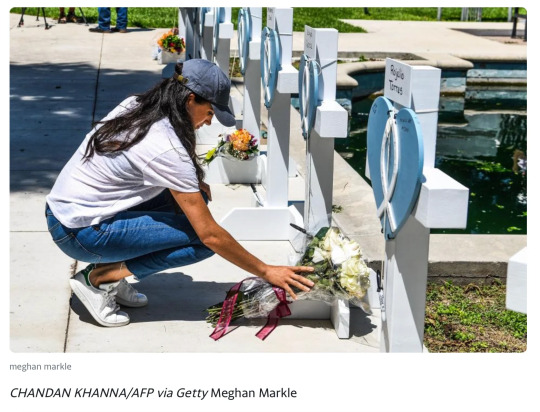
Photo 3: Taken by Chandan Khanna (AFP)
This photo of the visit to the community centre was provided directly to Buzzfeed by Meghan [Buzzfeed article] | [Archive link]

Photo 4: Meghan attends a community centre with vending machine sandwiches and Dorito chips / crisps
The Sussex Squad promoted World Central Kitchen (WCK) and they were the top donor to WCK to celebrate Archie and Lili's birthday. https://donate.wck.org/team/425216. credit: Aware-Impression8527. There were tweets about $100k raised to celebrate Lili's birthday. There was a mixup that Meghan also funded WCK at Uvalde from the Sussex Squad. This is because the Squad's $100k Lili donation was confused with the Uvalde attendance of Meghan. eg. this Scobie tweet on the 6th of June 2022.
I remember the squad saying that THIS stall was set up by Meghan to provide food to Uvalde. But in reality it was pre-made sandwiches and Doritos.
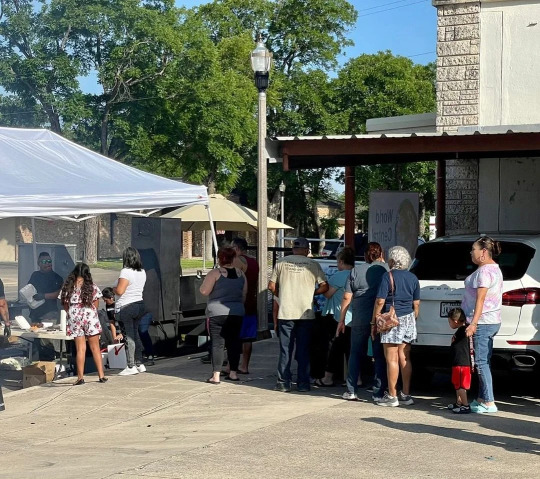
Photo 5: WCK kitchen in Uvalde not funded by Archewell
Archewell Partners was released and confirmed that WCK was a partner and that that money was donated to WCK for meals in Haiti. credit BuildTheHerd [Source Post]
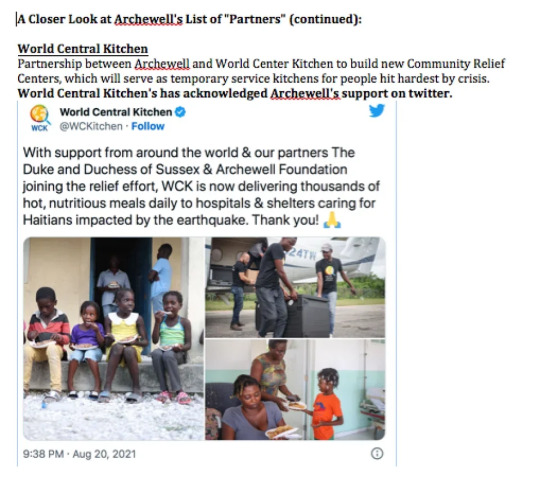
Photo 6: From BuildTheHerd post
CONTEXT MATTERS
What many people didn't realise is that Meghan was living her Pretty Woman fantasy during the Santa Barbara Polo match just a few days before this crass PR tactic. Remember that young polo player refusing to share his award with her? It was just us Sinners and the sugars who were watching these events unfold more closely. What's worse is that she went back to grifting at the Polo club immediately after the Uvalde stunt and didn't rush to Mexico to see her father. Here's the colour swatches of Meghan before and after Uvalde. It shows that she body glazed specifically for Uvalde like it was a red carpet event. [Source Post]

Photo 7: Her shade of bronzer is particularly striking as her skin is darker in the sun than in the shade.
Thomas Markle Sr, aged 77, suffered a stroke and was a mere 54 miles from Uvalde and a 4 hour drive from Montecito. She was happy to fly on a private jet to publicly show sympathy for dead kids but didn't show the same level of concern towards her dying father. [Full context, this Leilani of Barbados opinion post.]
______________________________________________________________
Soon after social media was divided about the incident and a lot of the focus was diverted to Meghan's stunt instead of the victims. Many pointed to the similarities between this incident and Catherine paying tribute to Sarah Everard. I dont think these incidents are the same thing as Kate was not captured by the media and was only recognised by those who saw her up close in the crowd [source post video] credit RoohsMama
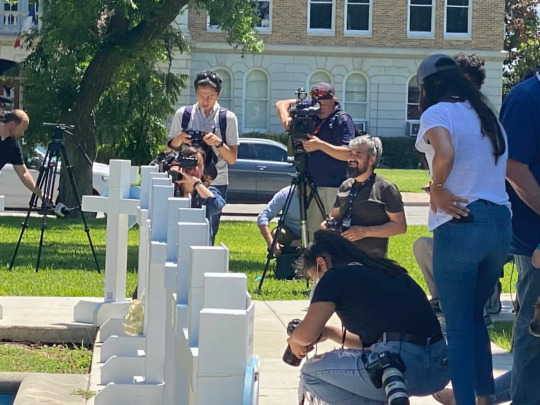
Photo 8: Meghan turning around to watch the photographing capturing her flowers on the cross
When you search for "Meghan Markle at Uvalde". You are most likely to see this video. Post source video by -ellen-degenerate-. In this version, the posing for photographers and the her photographers following after she leaves is not visible. There were photographers in the area, but Meghan brought her own photography team. This was confirmed after the pic from the community centre was exclusive to Buzzfeed and Sinners on the ground.
This VIDEO shows raw footage of 3 photographers capturing Meghan at the scene (source: NBC News: Meghan Markle Pays Respects At Scene Of Texas School Shooting YouTube).
Pay close attention to this NBC video as you can see the photographers snapping pics of her and how she poses. The photographs from these 3 photographers is what ends up getting circulated amongst the press. Note that this was 2 days after the tragedy. Bigger celebs like Matthew McConaughey turned up much later and the visit was not publicised.
Video 1 - NBC video, photographers following her
Here you can see the female photographer with the mask goes into the photograph the Meghan's flowers and Meghan cannot resist turning back to watch her taking the photo. You can also see Chandan Khanna capturing her laying the flowers at the beginning of the clip.
Video 2: close up of photographers capturing her
Carolyn Durand, Finding Freedom co-author tweets about Meghan's visit to Uvalde with the high res pics from the photographers
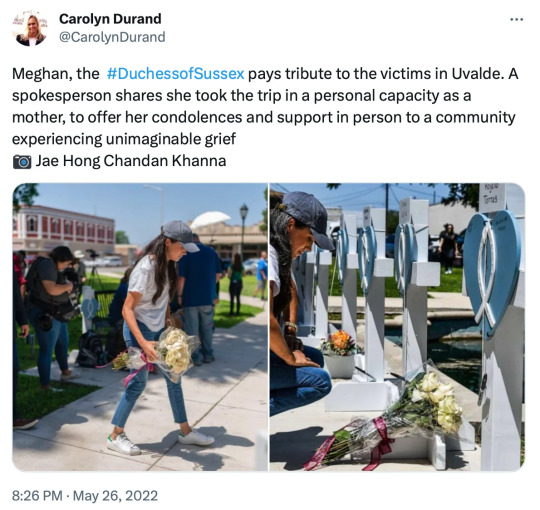
Photo 9: Look at the names of the photographers credited in the tweet
Shutterstock also tweets about Meghan's visit a few hours later and tags Kensington Royal

Photo 10: Shutterstock photo
These are the photographs from the 3 photographers from different agencies: Jae C Hong / Yasin Ozturk / Chandan Khanna. Credit Yahoo News | archive Even this article is disgusting because it talks about the couples impending travel to celebrate the Queen's Jubilee rather than discussions around the tragedy.

Photo 11: Jae C Hong photo (AP)
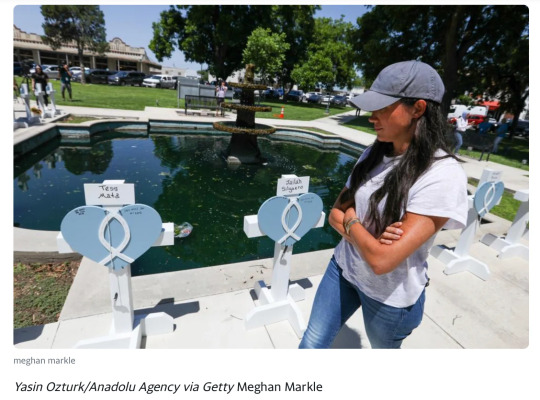
Photo 12: Yasin Ozturk photo (Anadolu Agency)

Photo 13: Chandan Khanna photo (AFP)
So by this point even casual on lookers were disgusted by her behaviour, especially in the context that her father was in hospital after a stroke.
Then came the leaks from the Sinners who were Boots on the Ground...
Brief highlights from from Feisty_Nurse post [Read About that Uvalde visit... Full post here]. Posted on 28th September, 2 days after Meghan's visit. So the crisps / chips weren't even from her.
I was visiting recently with one of the other nurses who also went to Uvalde, Texas following the school shootings. ..... I was busy staffing a shift at Uvalde Memorial Hospital on May 27th when I heard the narcissist of Montecito👸came in with her bodyguard, photographer, and the Netflix crew. ..... The Texas Highway Patrol providing security at the hospital escorted Meangan and her troupe out, with the suggestion that if she wanted to help? Go donate blood with directions to the senior center. Onward, the circus went to Robb Elementary so photos could be taken of Meangan in mourning.😢 Uvalde is a small community with a strong sense of family. So here she was, in the midst of the most horrific thing that could ever happen. An ego profiteer.😁 .... When in reality? There were no trays of sandwiches from H-E-B (grocery store). Just three small vending machine sandwiches that were tossed out. The drinks and chips were all courtesy of South Texas Blood❣️ for their donors. I know, I get the Doritos nacho cheese.
Highlighted comments from Bubblegum_yum_yum can be found in "The backlash is growing, so the BuzzFeed article about Meghan’s visit to Uvalde was edited" [RoohsMama post]
As a member of the media, I must say: SHE DID NOT AVOID THE MEDIA. THE MEDIA AVOIDED HER BECAUSE WE ARE NOT HERE TO TAKE PHOTOGRAPHS OF HER AND WRITE ARTICLES ABOUT HOW SHE BROUGHT CHIPS TO A COMMUNITY CENTER AND FLOWERS TO ONLY ONE OF THE CROSSES. She laid flowers at the “youngest victim” for clout She could have - and should have - laid flowers at every single cross. She can afford it. The role of the media is not to document unaffiliated people flying in for photo ops. Our role here is to tell the stories of the children whose stories will never be complete because they were tragically and disgustingly killed at 8, 9, 10 years old. ....
more comments from BGYY "She just kind of walked in with her crew ...." [HillyBeans post]
Yes. She did. I’m here as part of a press team and this entitled brat shows up with a team of several people and is trying to make it a godd*** spectacle! A Texas Ranger told her team to fuck off because it’s the site of a literal massacre, not a celebrity photo op I’m going to be very frank because this situation is extremely real and raw and beyond what words can describe: It’s time for HER to ask EVERYONE HERE if they’re okay! Don’t bring them chips and shitty sandwiches and show up with an entire media crew here for YOU and not for actual media coverage of what is happening! She’s also fucking it up for us actual reporters on the scene. There are such strict protocols and the relationship between the media and officials is predicated on such a fine line that having a fucking unauthorized media crew show up sets every other journalist back! ....
After the pap walk it was revealed that Meghan wrote a letter to Moms Demand Action and it was shared on social media by Shannon Watts

Photo 14: Meghan's letter to Moms Demand Action
The Archewell Foundation also funded a new KABOOM! playground in Uvalde in October 2022.
“It has been an honor to support the children and families in Uvalde design and build this amazing space where the community can come together,” said James Holt, Executive Director of Archewell Foundation, in a statement. “Our hope is that this special project can help the community heal, and be home to imagination, games and play for many years to come.”
Kaboom still organises fundraisers giving shoutouts to the Sussex Squad like on 4th May 2023 https://x.com/kaboom/status/1654206812587974656

Photo 15: Archewell funded Kaboom playground see their logo
Master Post link
author: Negative_Difference4
submitted: September 10, 2024 at 07:34AM via SaintMeghanMarkle on Reddit
#saintmeghanmarkle#sussexes#markled#meghan markle#harry and meghan#archewell#prince harry#duke and duchess of sussex#megxit#duke of sussex#uvalde#fucking grifters#walmart wallis#archewell foundation#voetsek meghan#duchess of sussex#omid scobie#meghan and harry#duchessofsmollett#duchess meghan#the duke of sussex#doria ragland#markus anderson#Negative_Difference4#tyler perry#oprah winfrey#misan harriman#master post#top post
15 notes
·
View notes
Text
Hello TMBS fandom. This is a request for a little help with some of my fic writing from any extraordinary education fans.
So I write mostly for the show, but am at the point where I want to start writing and referencing “show versions” for some of the book characters, and the one I’m working on right now is Violet Hopefield. Sadly, I have not read extraordinary education, and was hoping to get some character details.
I do want to preface this by saying that my intention is to write the character in a way that follows the plot lines I’ve set up, so while I won’t be writing an exact copy of the character, I do want an idea of what she’s like. Think the differences between book and show Noland and Canonball or even book Curtain and show Curtain. Are they the same? No. But you see the book character they are based on in them, while acknowledging that this is a slightly different story and a different version of them, while still enjoying both the show and book versions of the characters.
Head canons or popular head canons are appreciated, but I'm mainly looking for what's canon so if something is "canon to you" based on how the character acts, I'll consider it, but please specify what's canon and what's not.
With that in mind, here's a rundown of what I know and what I'd like to know. I'll start with Violet, but I might include a few things for John too (and I'll have some questions about a few other book characters eventually, but I'll stick with them for now).
Violet Hopefield:
The biggest gripe I think people might have with the way I'd write her is her age. Apparently in the books, the ages are Nicholas (9), John (12), Violet (14). The fandom wikipedia stuff I found only said that Violet had an 8th grade education and didn't list her age, so in a book series about genius kids, I just imagined her being younger than John, around Nicholas' age. Obviously this was a mistake, and given that show Nicholas is 12, that bumps the ages at which he meets them to Nicholas (12), John (15), Violet (17). My question is, if I made her character younger, like...around Nicholas' age, would that completely destroy the character? I know this is a big ask, but please, it's for plot purposes, and you'll be grateful later. I just want to know if it's a situation where "yes the characters are technically different ages, but at the end of the day, they're all just friends hanging out and who the oldest is doesn't really matter" vs. "Violet is the older mature one of the group. This is one of, if not her main defining character trait and changing it completely changes the character." If it's option two, I might still make Violet younger, while being very careful to make her a younger but mature child, like what they did with show Constance where she's not a toddler anymore, but she makes up for it by being extremely violent and fighting falcons (or what they did with the twin's ages, and Number Two and Rhonda's ages, etc.)
I know Violet is deaf, and Nicholas learns sign language to talk to her, but she's extremely good at reading lips. Her disability would for sure be part of the fic, and I've already read tips on and thought about ways I can incorporate this (at the risk of finding false info on ASL signs, I plan on writing when signing occurs, but won't make an attempt to write out the exact hand motions unless I can verify that what I'm describing is factually correct). Her ability to read lips is interesting, and I'm not sure how it's done in the books or whether it's done accurately (It is estimated that only 30% to 40% of speech sounds can be lip-read even under the best conditions and extra information is usually required to understand what is being said. That's from google, but I've heard that stat a lot). I plan to stay true to the books in this regard, but will be highlighting the fact that this is unusual and extremely impressive on Violet's part. How will I be doing that? That's a spoiler so unfortunately, I can't share, but I do have that covered. If there are any descriptions of sign language or aspects of deaf culture included in the books that are also important to include in fic, please let me know (I am also aware that her mother is also deaf, more on her later).
I know she's an artist. Not sure what she likes to draw (people? nature?) or what style she uses (painting? sculpting? sketches?), but if there's info on that, I'll take it. I also know she had an interest in going to art school (the whole Nicholas thing isn't an issues anymore since he's adopted by the Glenn's), so I will have her doing art competitions and stuff like that.
And that's a summation of everything I know about her. Other details that are appreciated are physical appearance (though that's subject to change, the show certainly changed that a lot for some characters, but I'd like to know what I can use), any defining beliefs or principles she lives by or revolves her life around, the top adjectives you think describe her, character quirks (e.g., Kate's bucket), and if possible, some snippets of dialogue from the books that give a good impression of her character.
I'd also like to know if there is anything that falls under the "she would NOT say/do that OR she would not say/do that without very special circumstances. For example, book Curtain would never adopt a child. In the show, he does, and most of us are fine with that, because they explain and clearly show the differences between the show and book characters. In another example, they made show Benedict a more flawed or maybe a better word is relatable mentor. And most of us were fine with that too, again, because they showed us how he arrived at that point. However, if they made Mr. Benedict a mean or unpleasant person, that would totally rip apart his character, regardless of the justification you gave for it. Obviously, what falls into the "would never" and "under the right conditions" categories is subject to debate, so I'll use my best judgment, but would still appreciate a starter list to go off.
Finally, anything else you think is relevant about Violet or her relationships with other characters is appreciated.
John Cole:
I know John Cole is Violet's brother, and he is adopted. I understand this happens in the books and that Nicholas and John are in an orphanage together, but since this is a show version of the character, this will actually happen before Nicholas meets them, but John Cole is still adopted. What I don't know are the circumstances of his adoption. Did the Hopefield's adopt him because he was friends with Violet? Is that why they wanted to adopt Nicholas too? How did the Hopefield's meet him? Do we know anything about John's bio family and culture that differs from the Hopefield's?
I've seen a lot about John Cole and farms. And a post about he and his wife having a farm. Does he actually have a wife in canon? Do the Hopefield's have a farm? Or does John just have "farmer vibes"? Is getting a city job something John would do or did he declare himself to have a deep seated hatred of the big city?
I know John calls Nicholas "Nick" on at least one occasion. Is this what John normally calls him? Do the Hopefield's and Violet call Nicholas "Nick" too, or is this just a "John thing"?
Other details that are appreciated are physical appearance, any defining beliefs or principles John lives by or revolves his life around, the top adjectives you think describe him, character quirks, and if possible, some snippets of dialogue from the books that give a good impression of John's character.
I'd also like to know if there is anything that falls under the "he would NOT say/do that OR he would not say/do that without very special circumstances as discussed above.
Any of course, anything else you think is relevant about John Cole or his relationships with other characters is appreciated.
The Hopefields:
I know Mrs. Hopefield is also deaf. Can she read lips too? Is Mr. Hopefield also deaf?
What are the Hopefield's occupations? I read something about them being miners and poor, not sure if that's accurate.
Why are they interested in adopting? Have they always been interested in adopting? Why did they want to adopt John?
Are there any important aspects to the Hopefield's culture or family philosophy? For example, if the Hopefield's are, say, Jewish or immigrants, or some sort of culture is mentioned, I would like to know so I can represent that properly and not accidently write it out of the story.
Are there any other members of the Hopefield family besides the parents, Violet, and John? Any beloved pets?
Other details that are appreciated are physical appearance, any defining beliefs or principles they live by or revolve their lives around, the top adjectives you think describe them, character quirks, and if possible, some snippets of dialogue from the books that give a good impression of their characters.
I'd also like to know if there is anything that falls under the "they would NOT say/do that OR they would not say/do that without very special circumstances as discussed above.
Any of course, anything else you think is relevant about the Hopefields or their relationships with other characters is appreciated.
Thanks guys! Feel free to add to the post, DM, or drop by my ask box.
And yes, eventually with enough time, I might like to read extraordinary education someday, but I'd likely write this fic first, so I want to get some accurate info. Plot spoilers are fine, that won't deter me from reading it.
#Extraordinary education of Nicholas Benedict#EEONB#tmbs fanfic#mbs fanfic#mysterious benedict society#the mysterious benedict society#tmbs#violet hopefield#john cole
21 notes
·
View notes